Puerto Montt, Puerto Chacabuco and South
October, 2004
October 17th
The second night on the boat was smoother than the first, since only one of the two 3000-horsepower engines was running. We spent much of the day on the boat, arriving in Chacabuco at 3:30 PM. Most of the passengers took a bus ride into Puerto Aisen and returned grumbling about how little there was to see. It was really just a diversion to keep everybody out of the way of the truck unloading, which involved five hours of moving truck trailers onto an elevator, down to the lower level and off the back of the boat. The 113 meter ship can carry an 800 meter line of trucks.
Much lighter now, carrying only one Jeep Cherokee, the ship rode three feet higher in the water. We departed about 10:00 PM for the San Rafael Glacier, 100 km farther south.
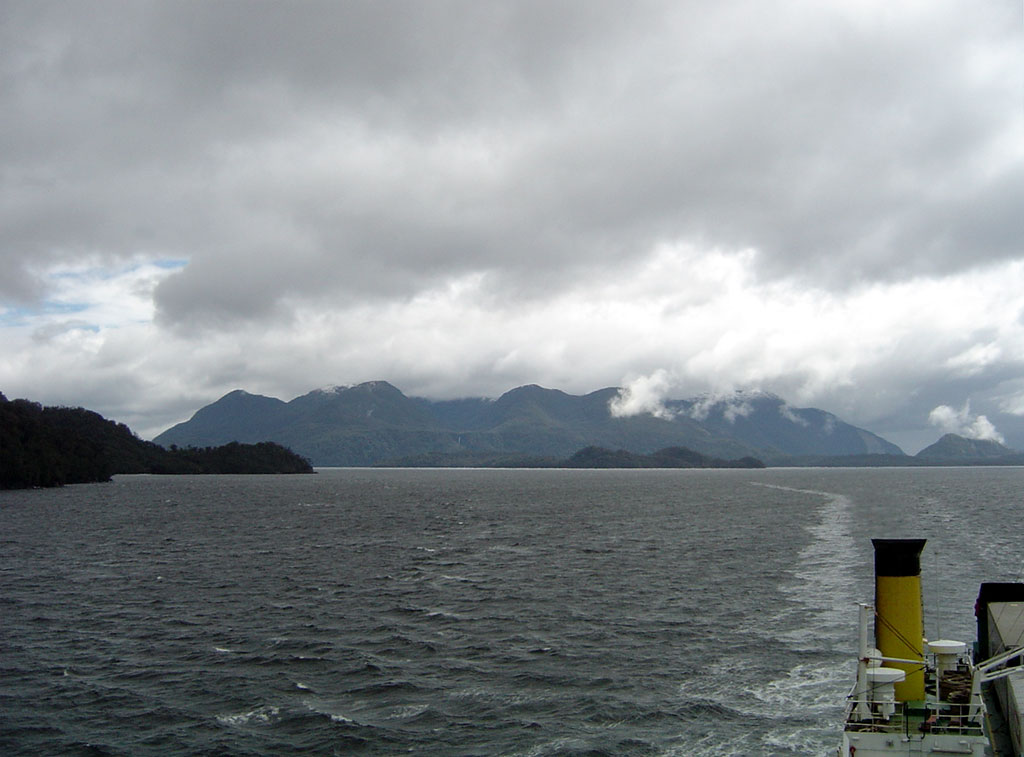
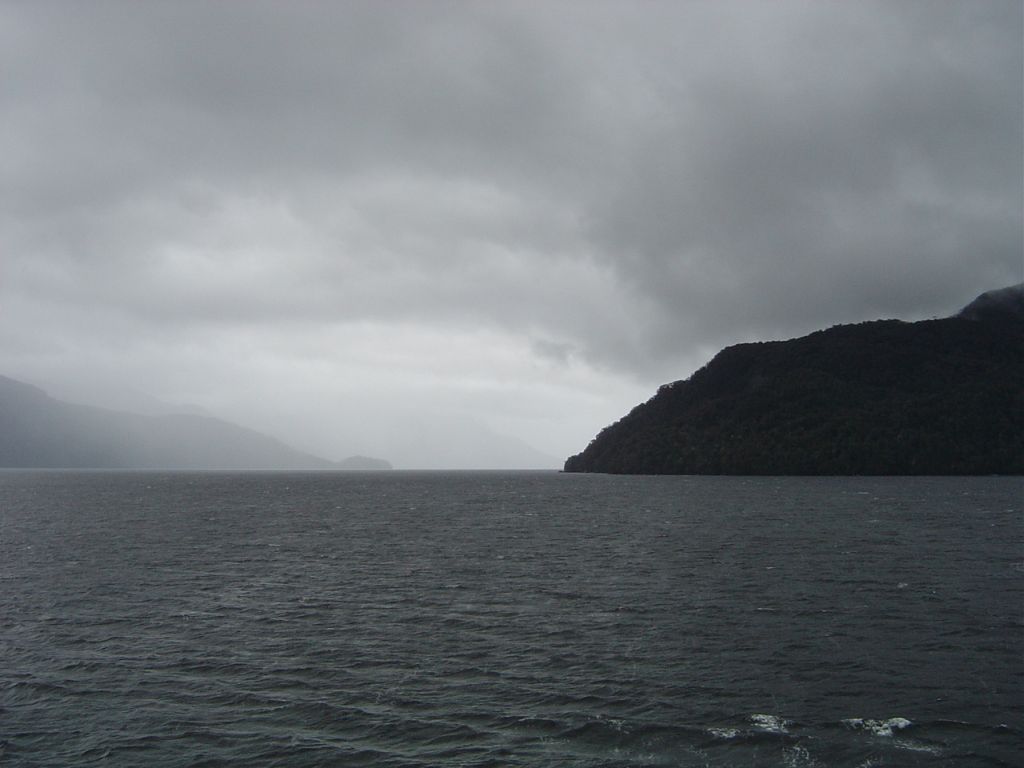
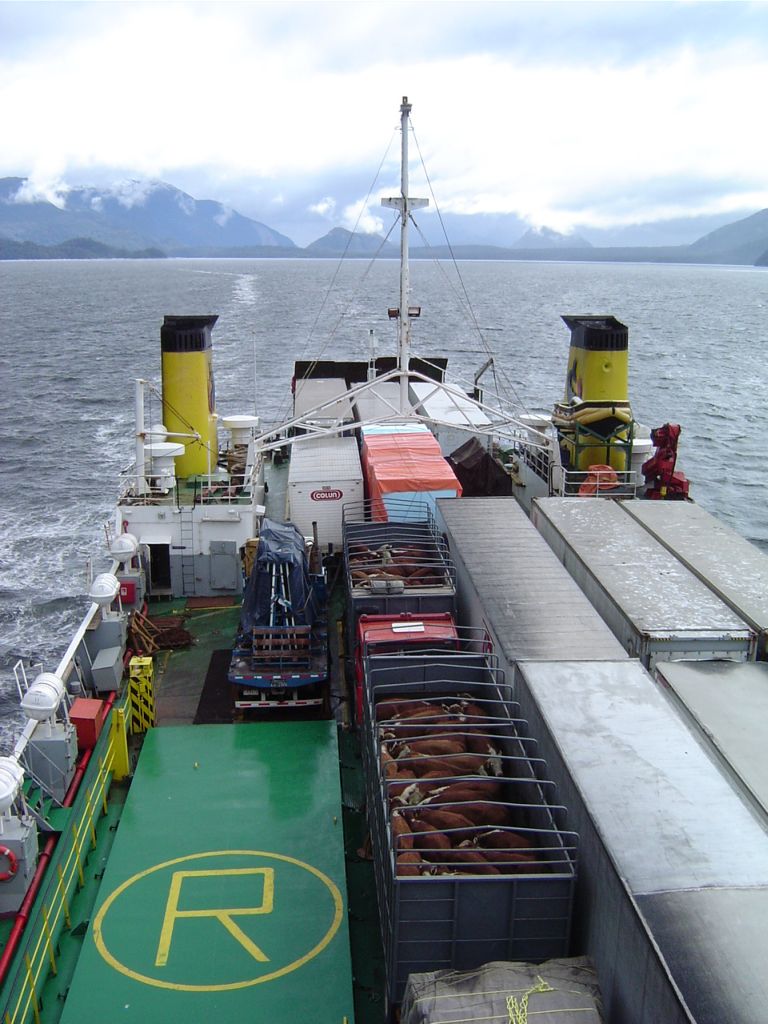
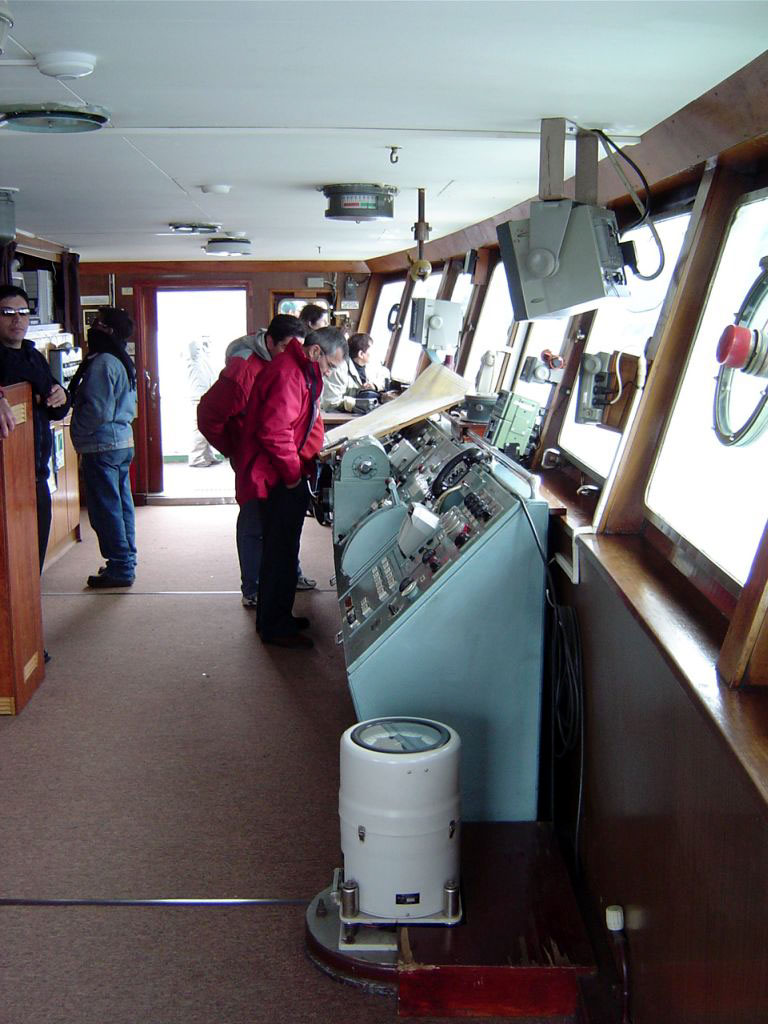
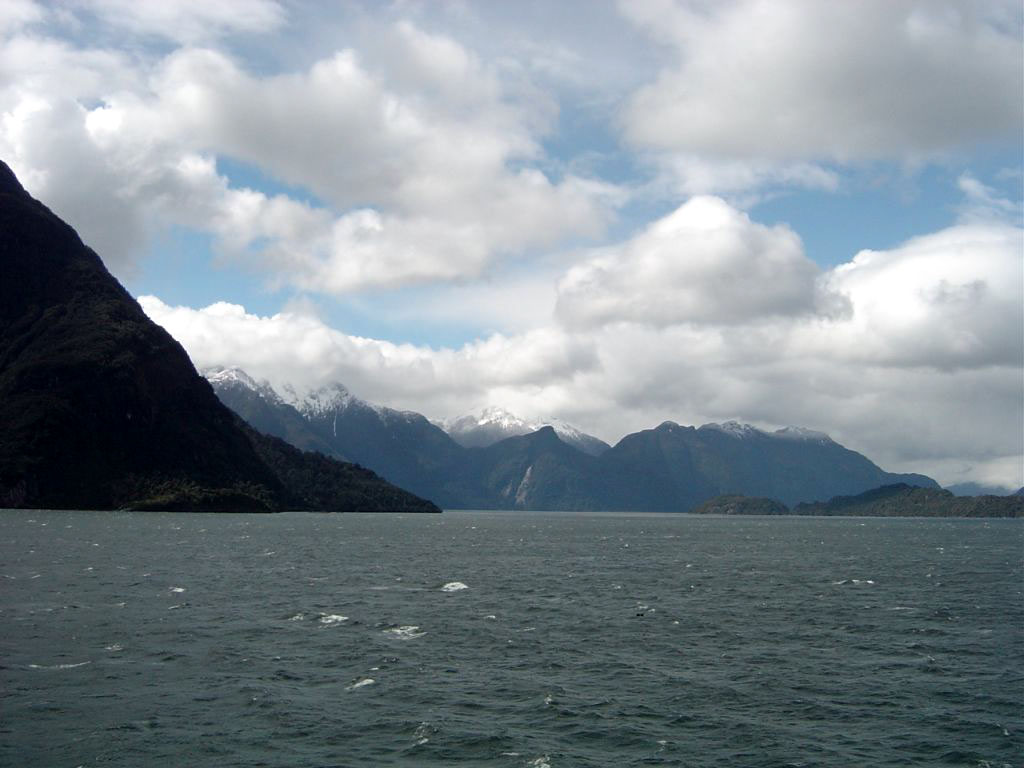
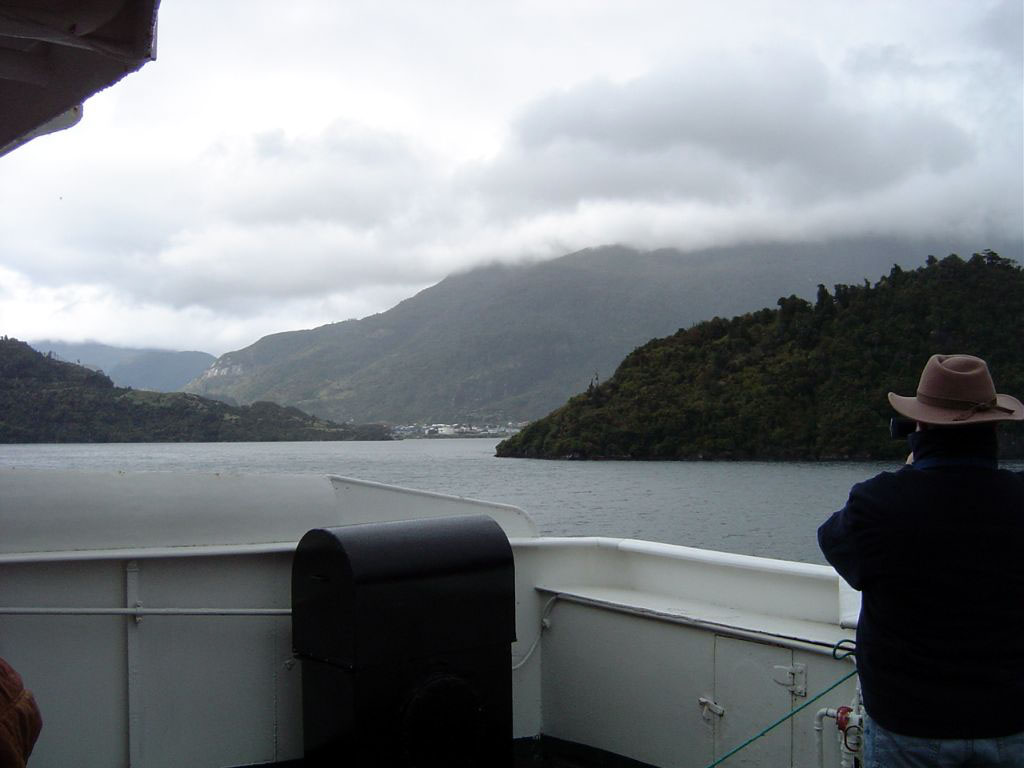
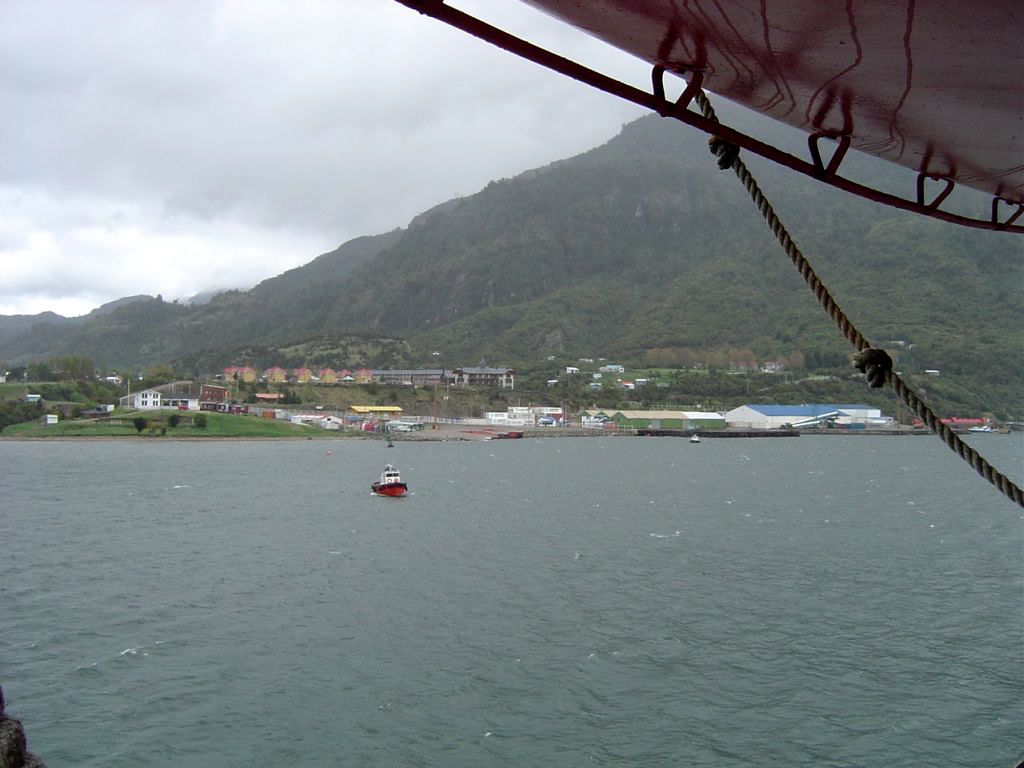
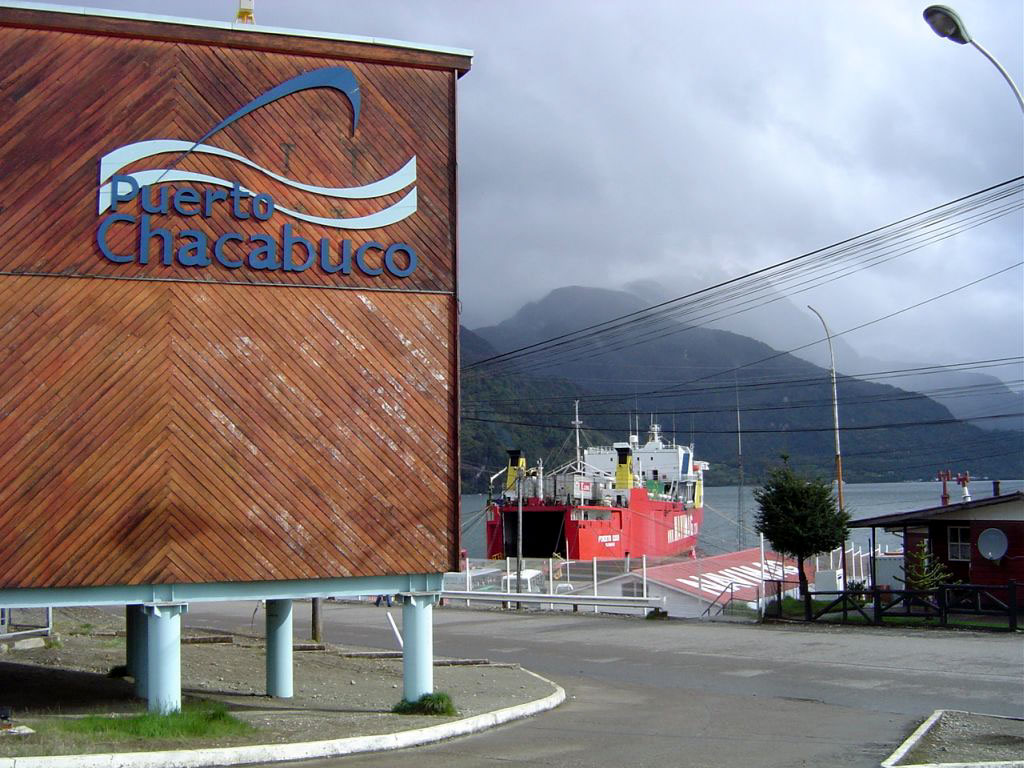
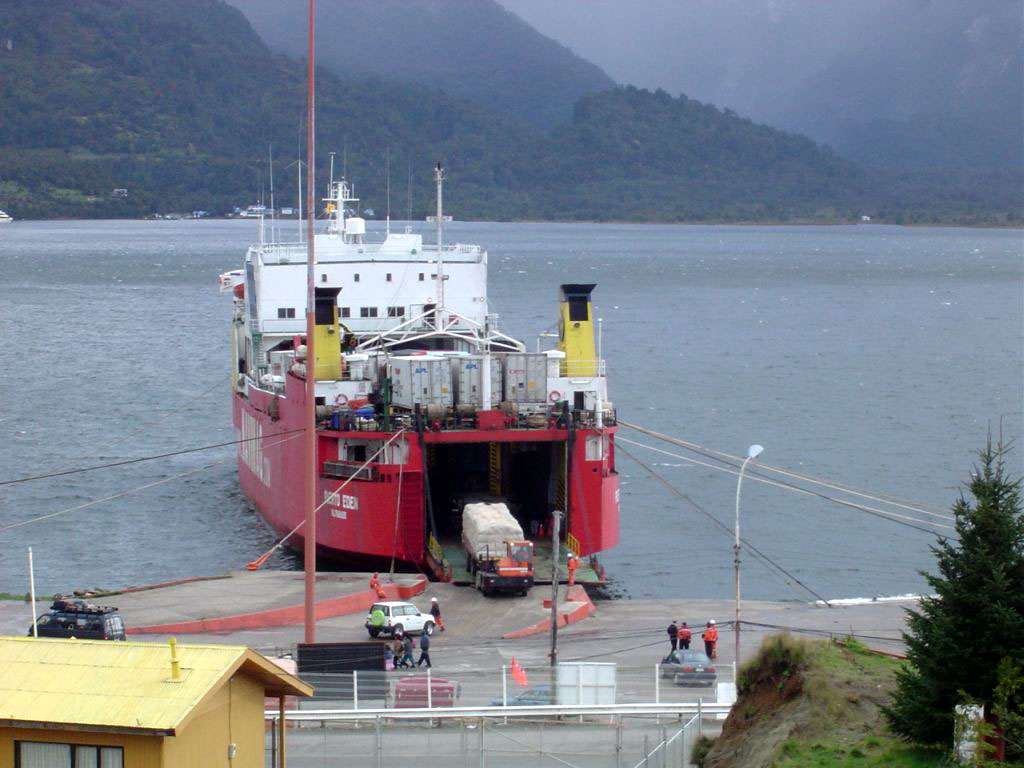
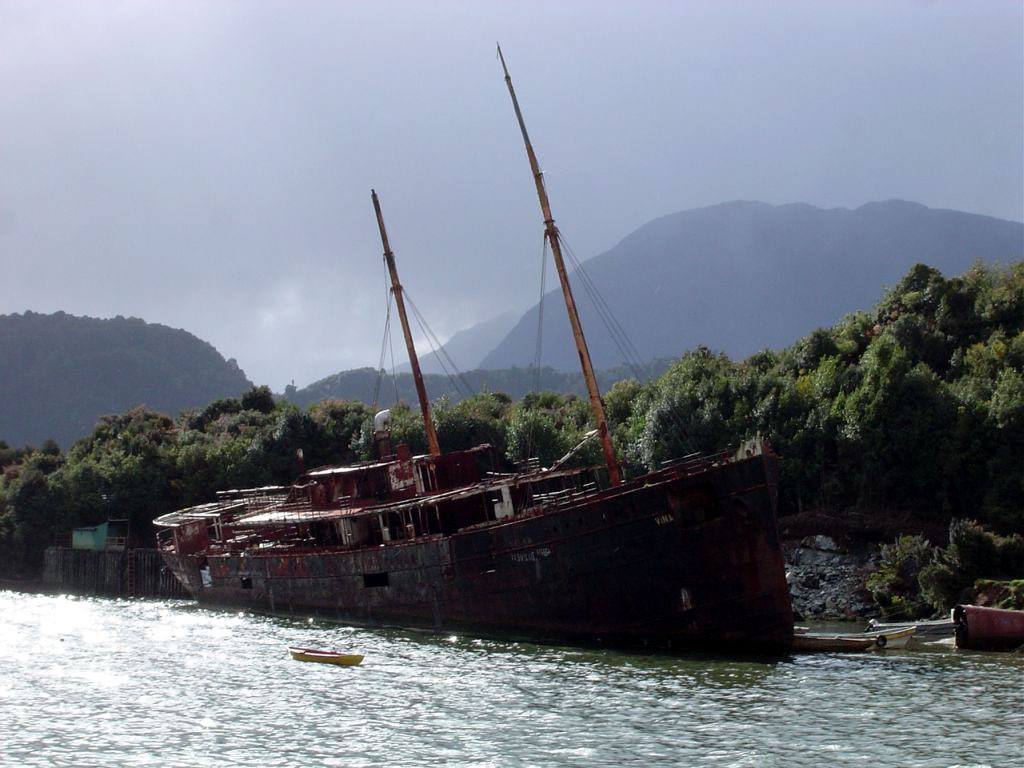
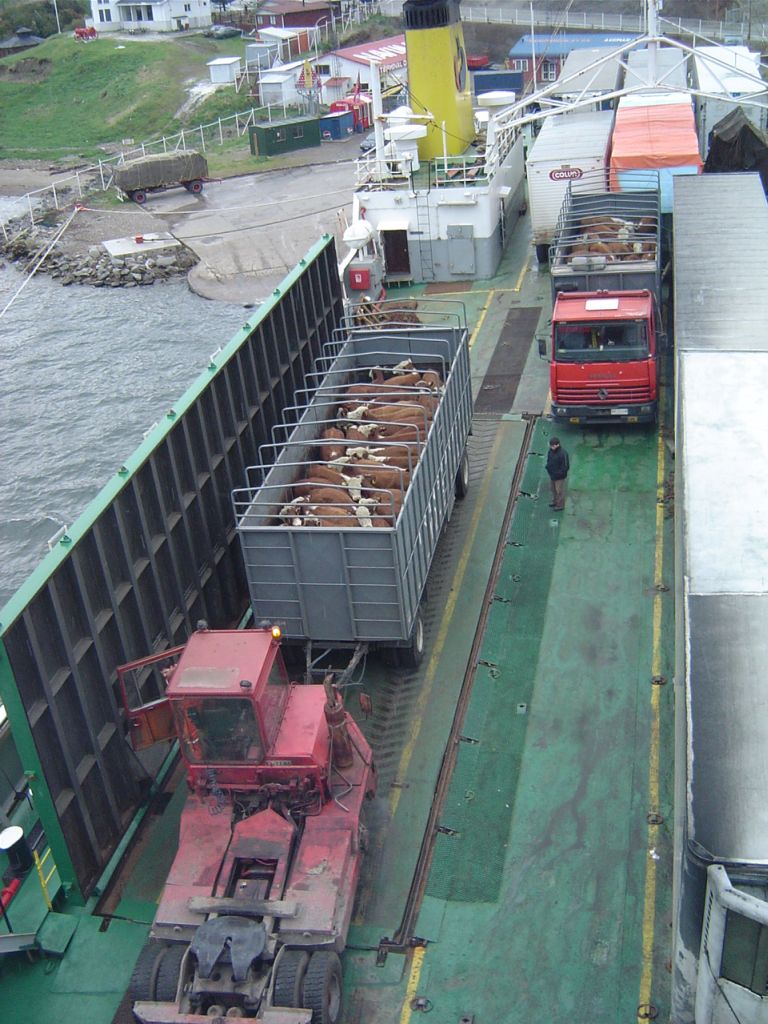
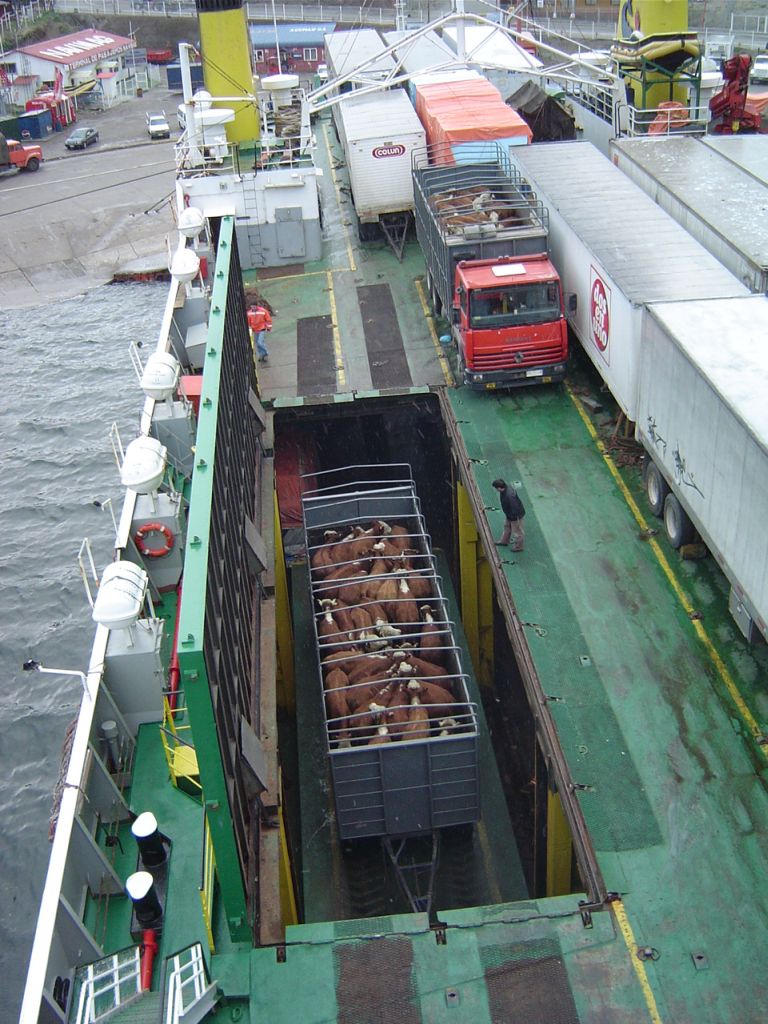
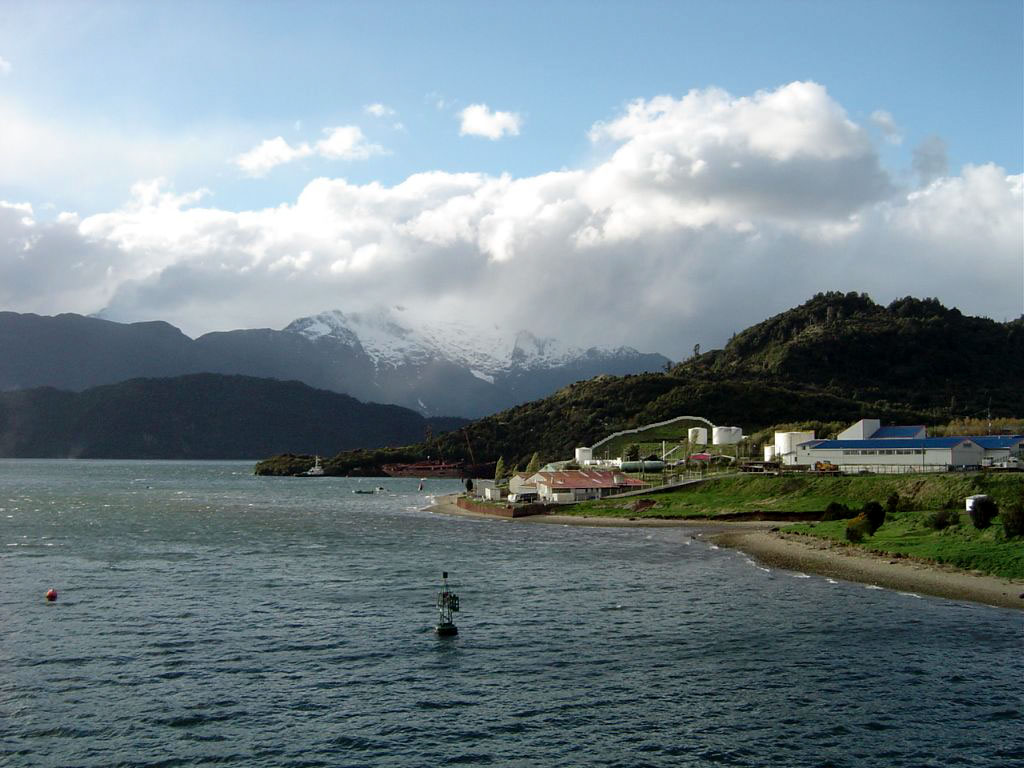
October 18th
Arrived at the San Rafael Glacier at 9:00 AM. By 10:30, four twenty-five passenger boats had been lowered into the water, enough to transport half the passengers to the glacier. We had translated our instructions to "get in the second group" as "get in the second boat," so off we went. It was just as well. The people we sat with spoke English, so we weren't left out in the cold. The mother-ship kept getting smaller and smaller as we advanced 3 km toward the glacier with huge blocks of ice, passing on each side, close enough to touch. We stopped about 500 meters from the face. Getting closer would have involved pushing large blocks of ice aside, as well as risking having a portion of the face, perhaps 100 feet high, fall on the dinghy or swamp it if a section collapsed into the water. After the four boats grouped together, the crew broke out souvenir glasses. We scooped 3000 year-old ice cubes into our glasses and the crew poured Ballantine's Scotch.
Rain began as we headed back for a hot lunch, making us doubly glad we went in the first group.
If you wish to book a luxury cruise, the Navimag experience (other than actually visiting the glacier) will be a disappointment. If you wish to book a bunk-bed on a cargo vessel, you will enjoy this trip. Food was minimal, served in shifts, cafeteria style, on plastic trays. The dining area was cold, as were the cabins. The port-hole by my head couldn't be fully closed, so a cold wind whistled in during the night. All announcements were given in Spanish for the Chilean tourist. That German, Finnish and American visitors might be aboard never crossed their minds. No peace and quiet can be found in the common areas, you must retreat to your bunk-bed in your jail cell.
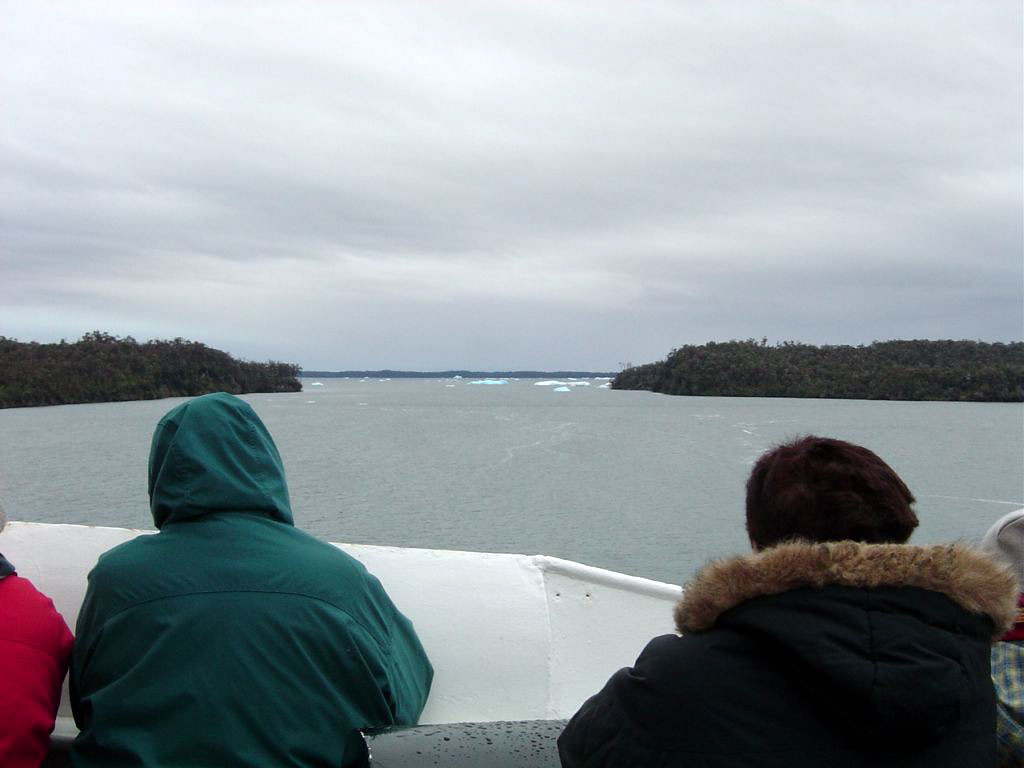
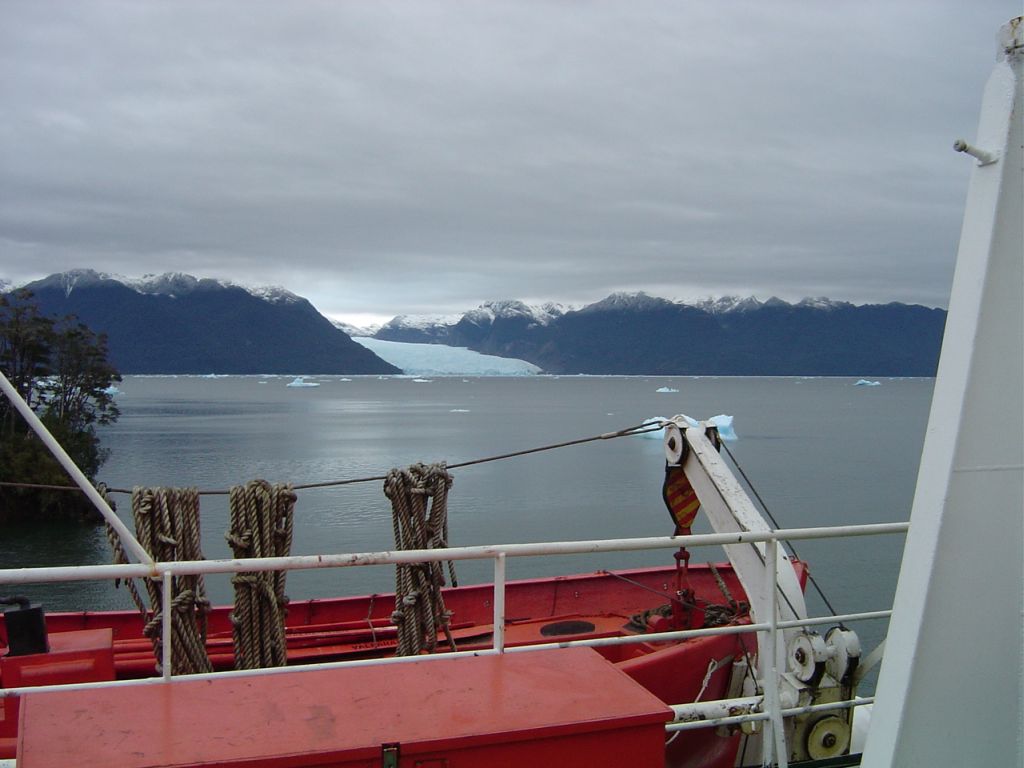
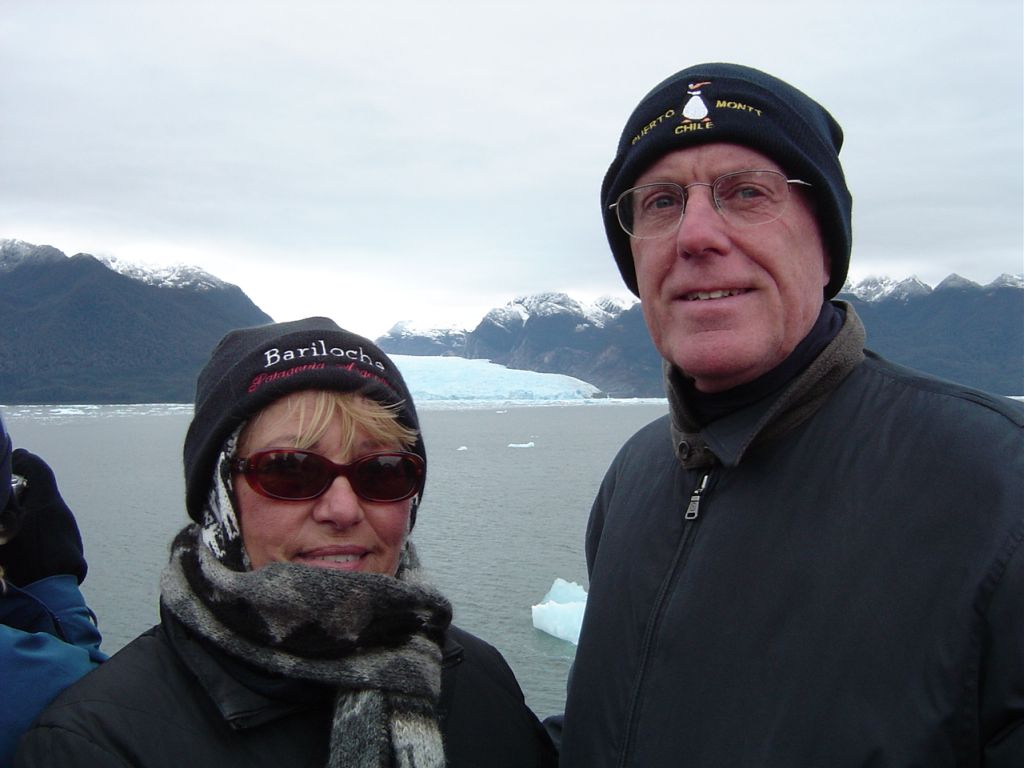
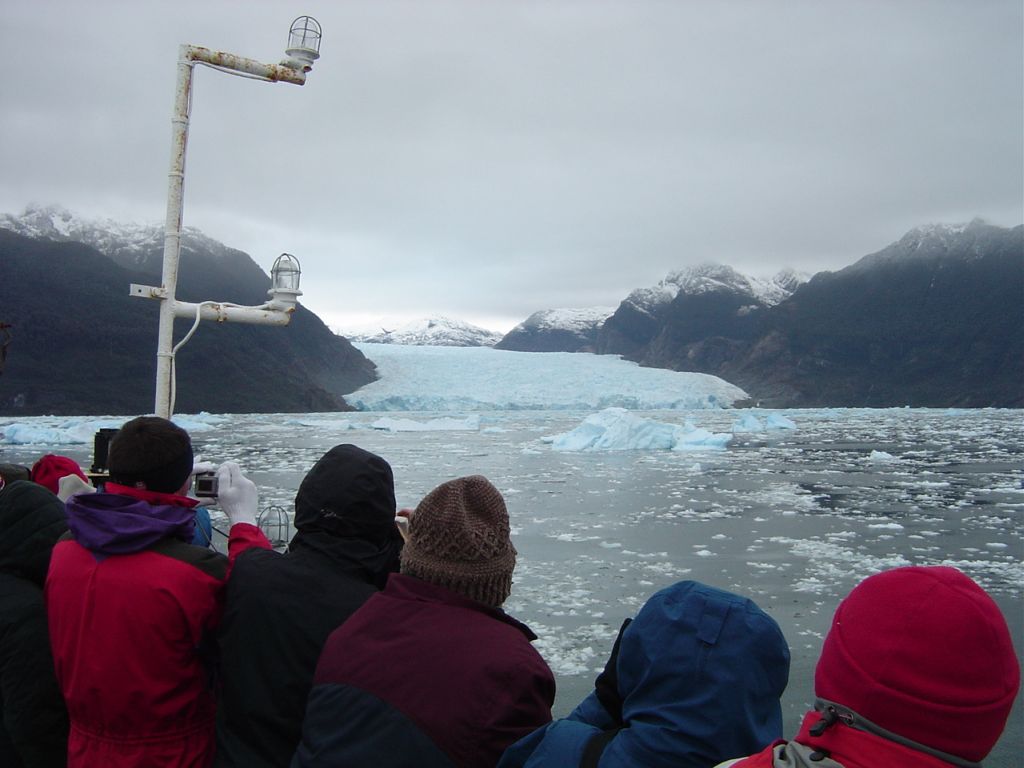
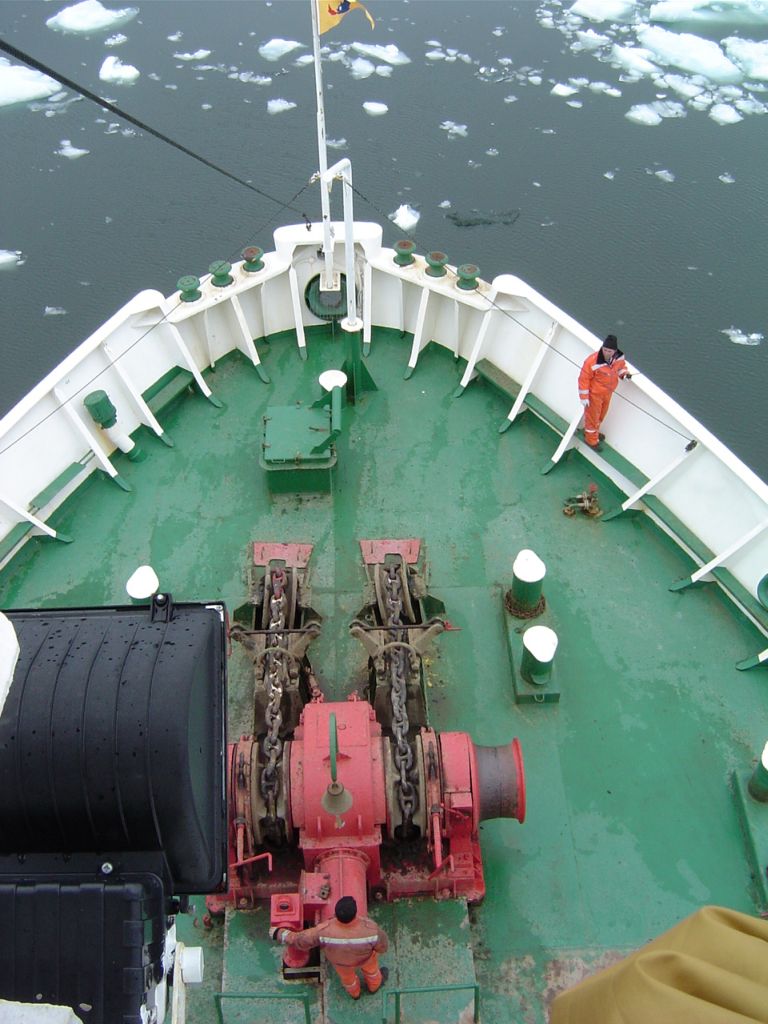
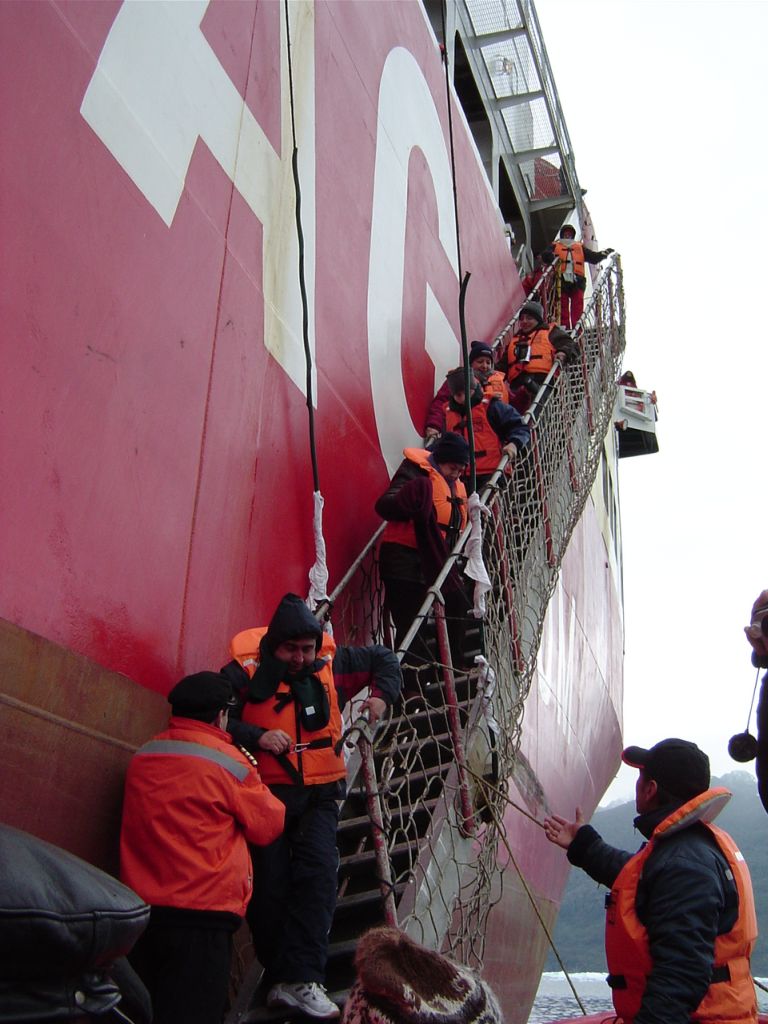
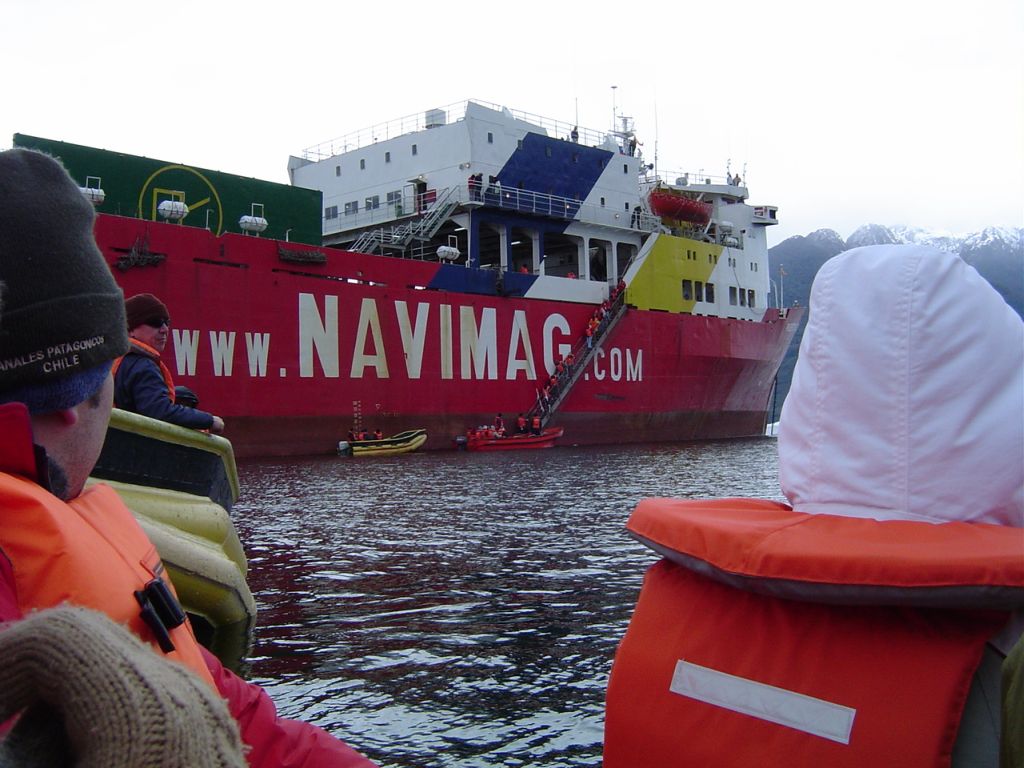
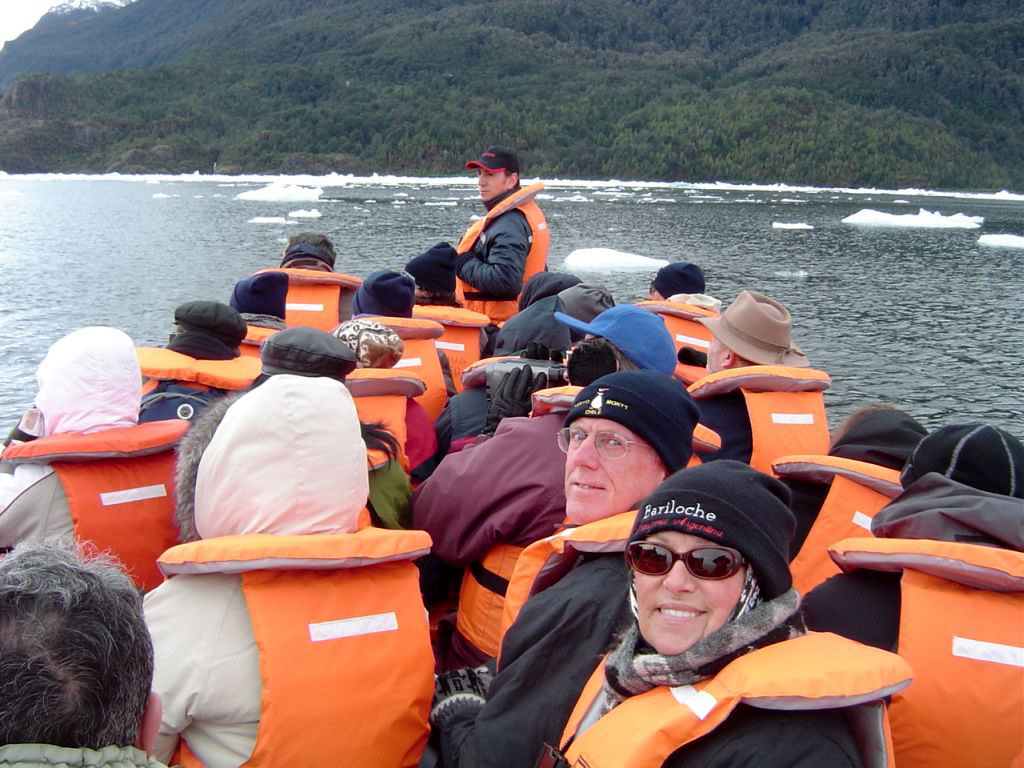
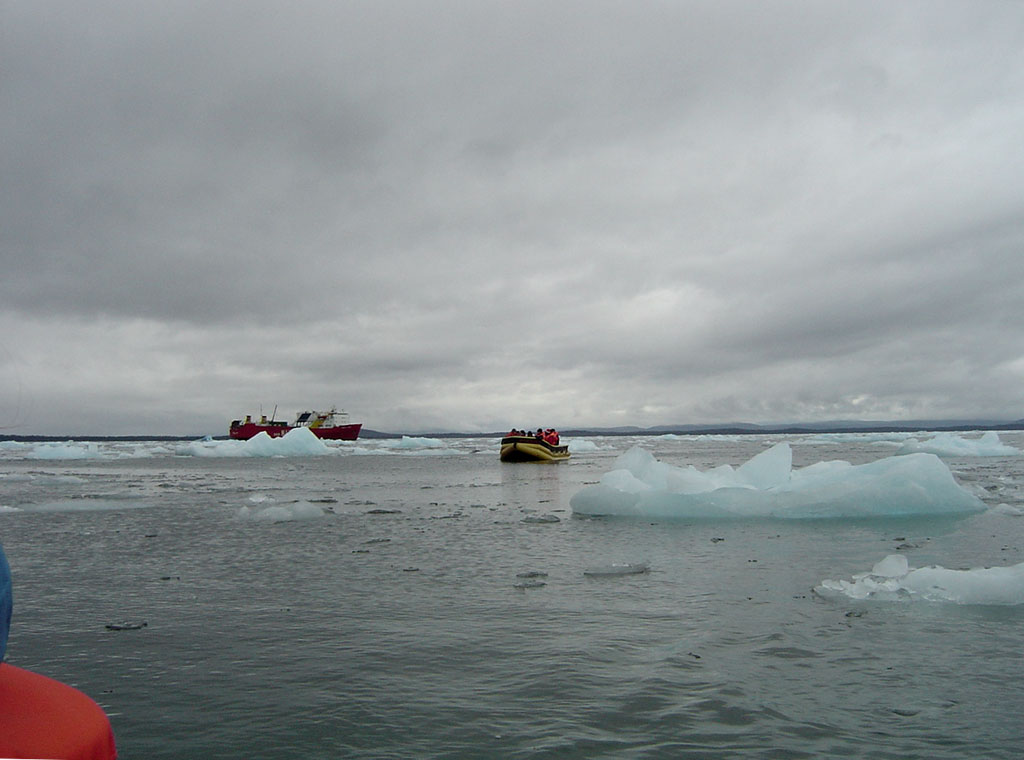
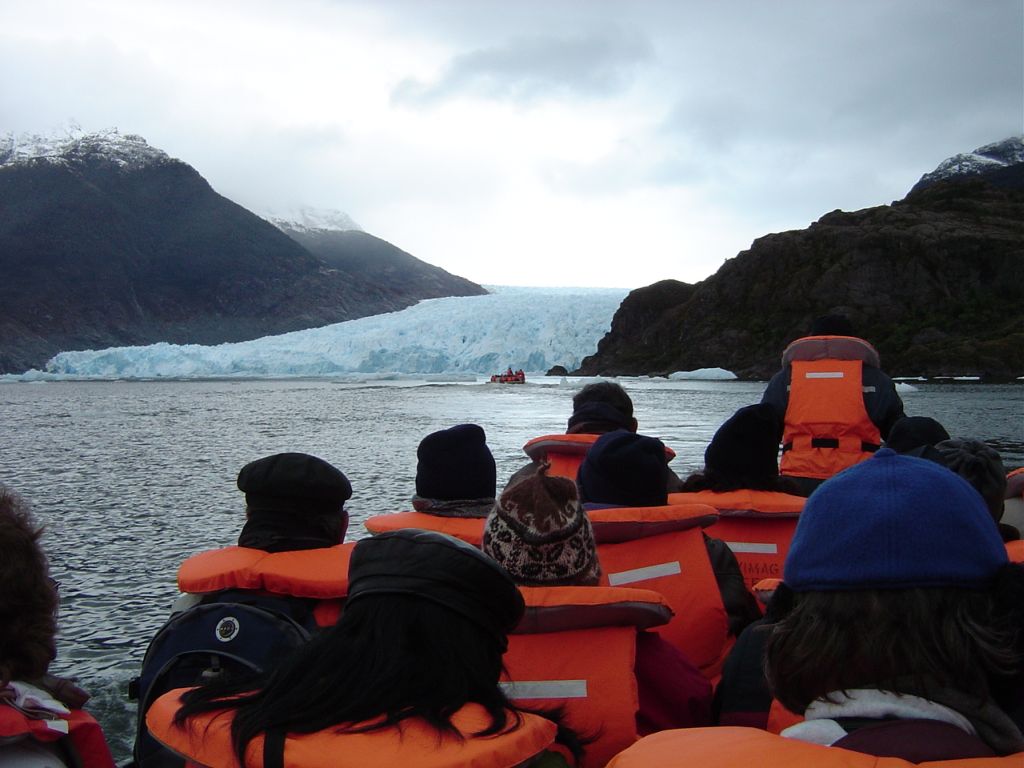
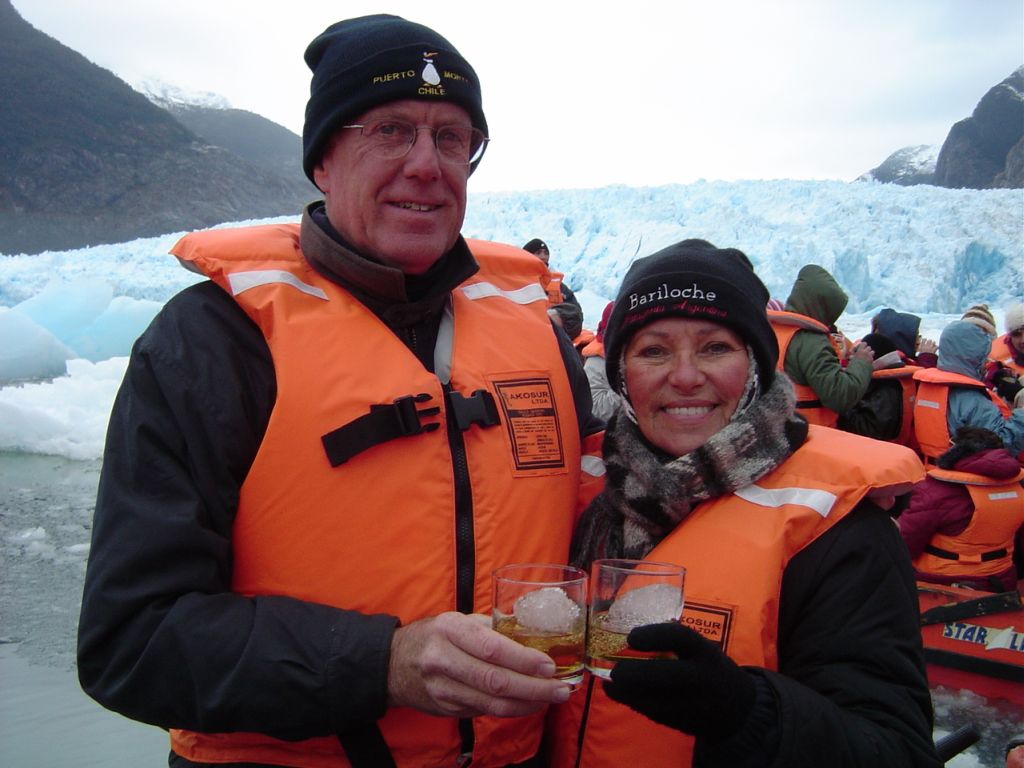
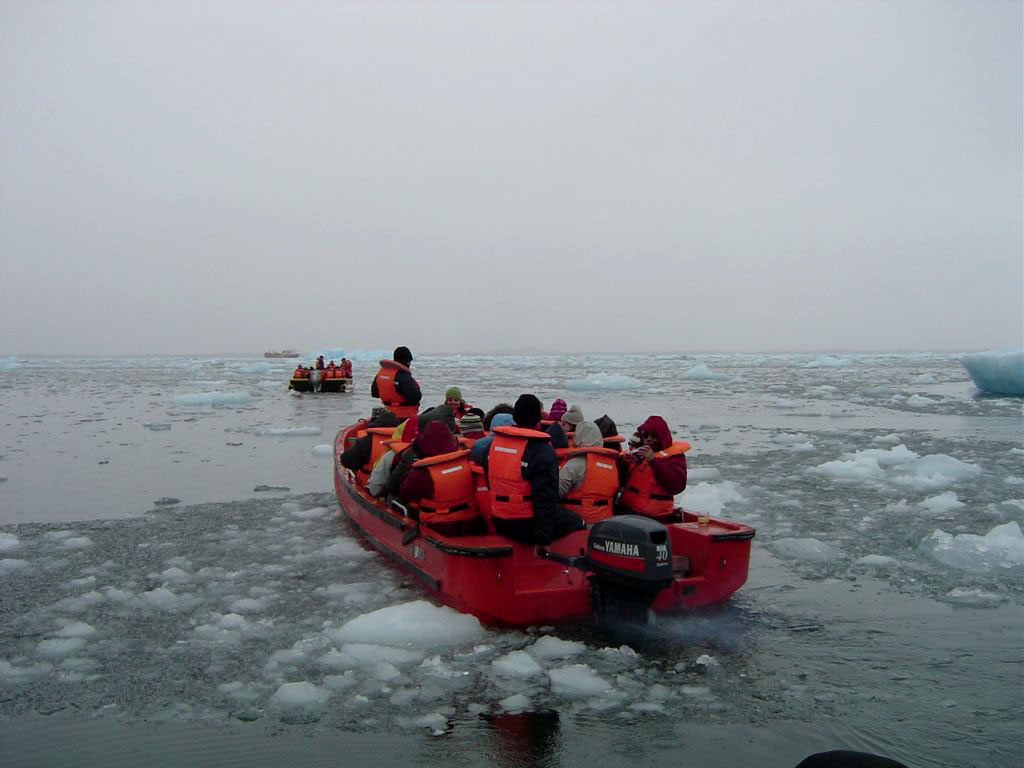
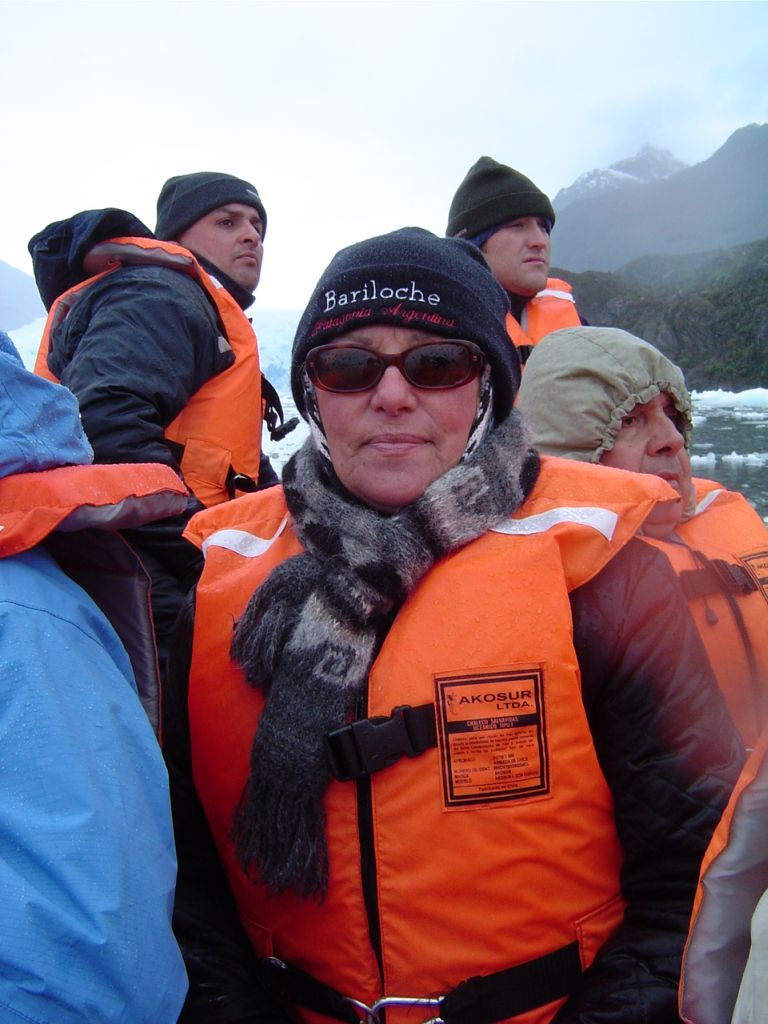
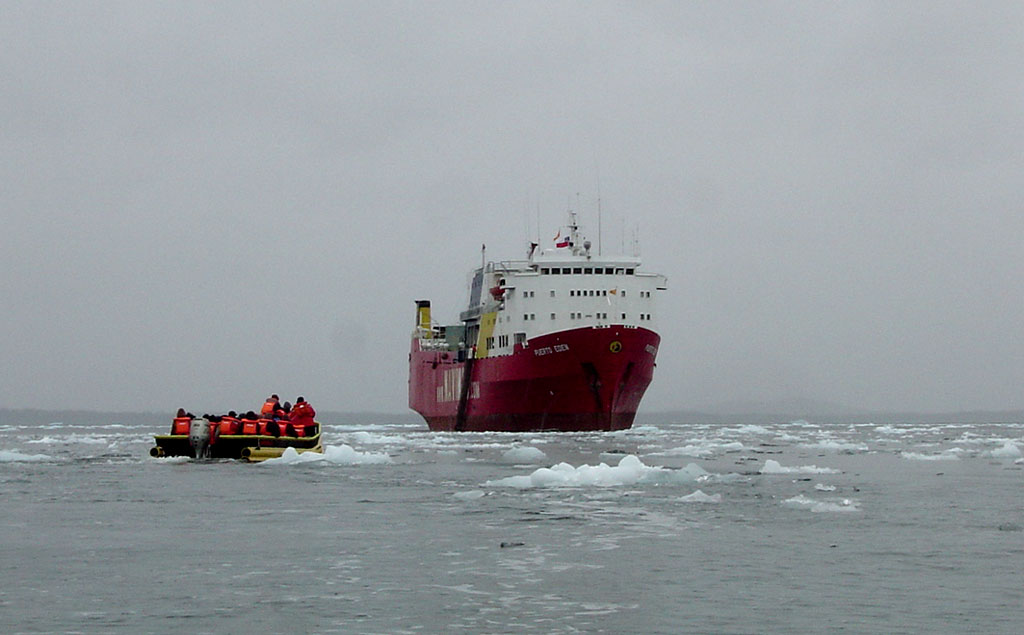
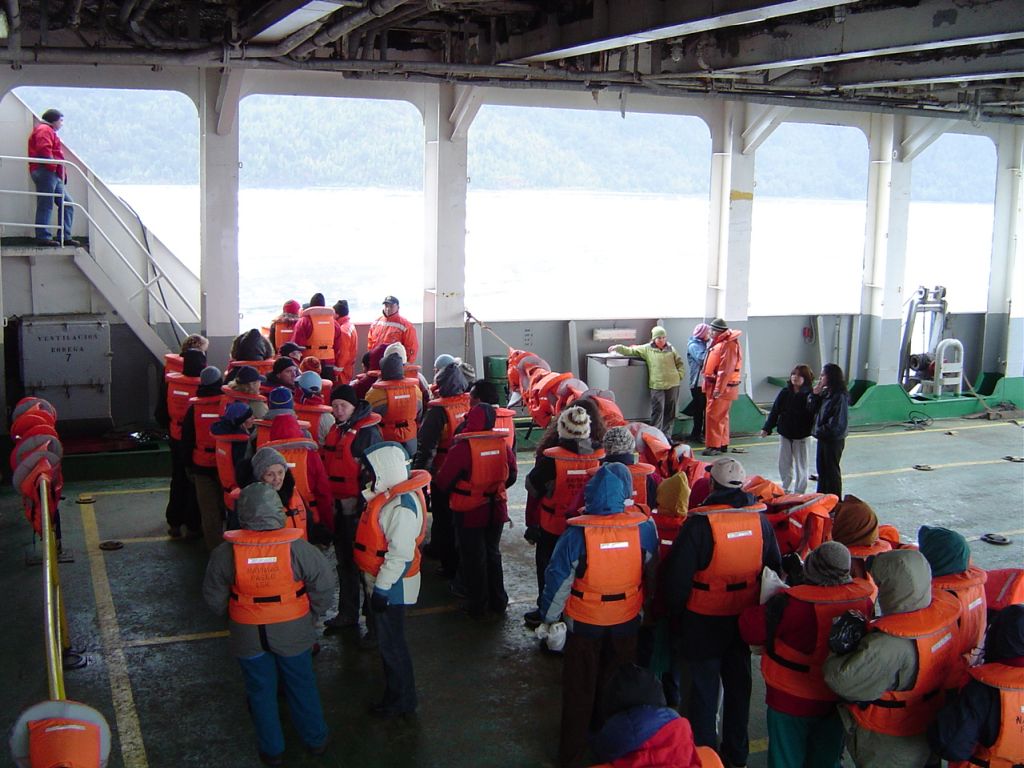
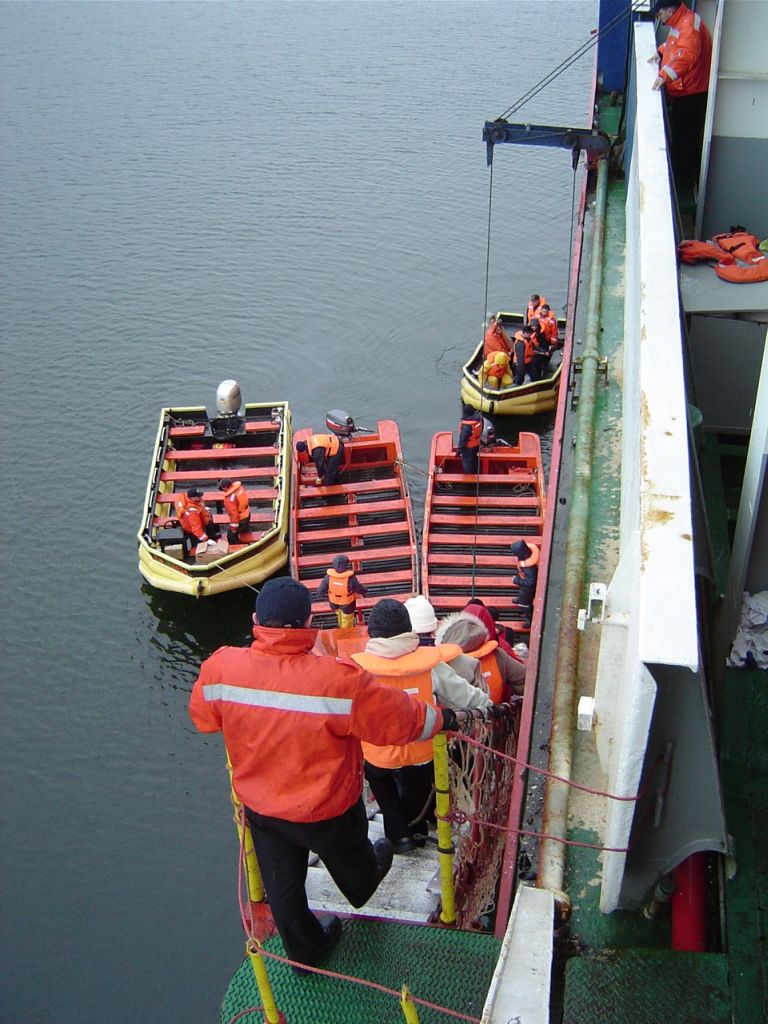
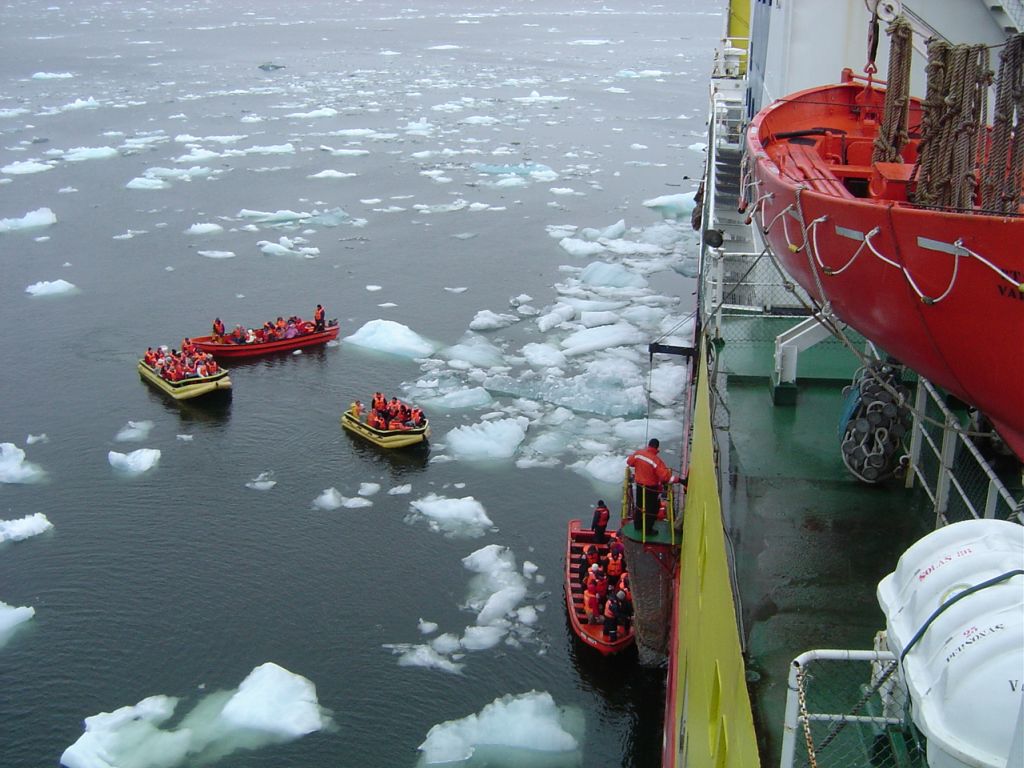
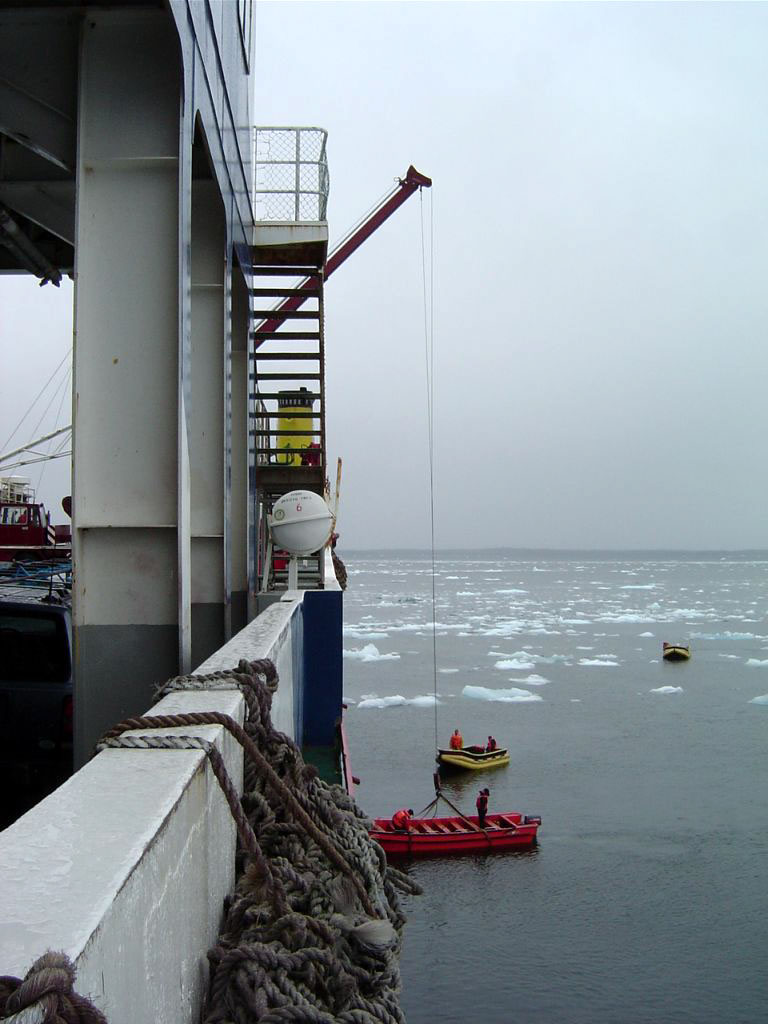
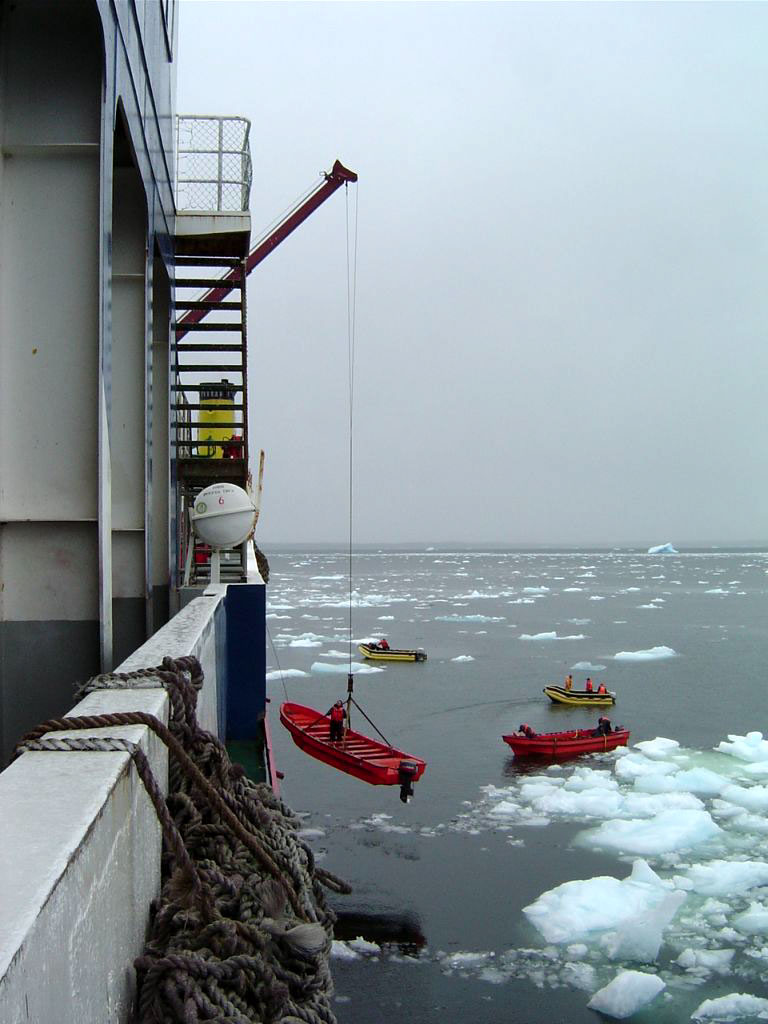
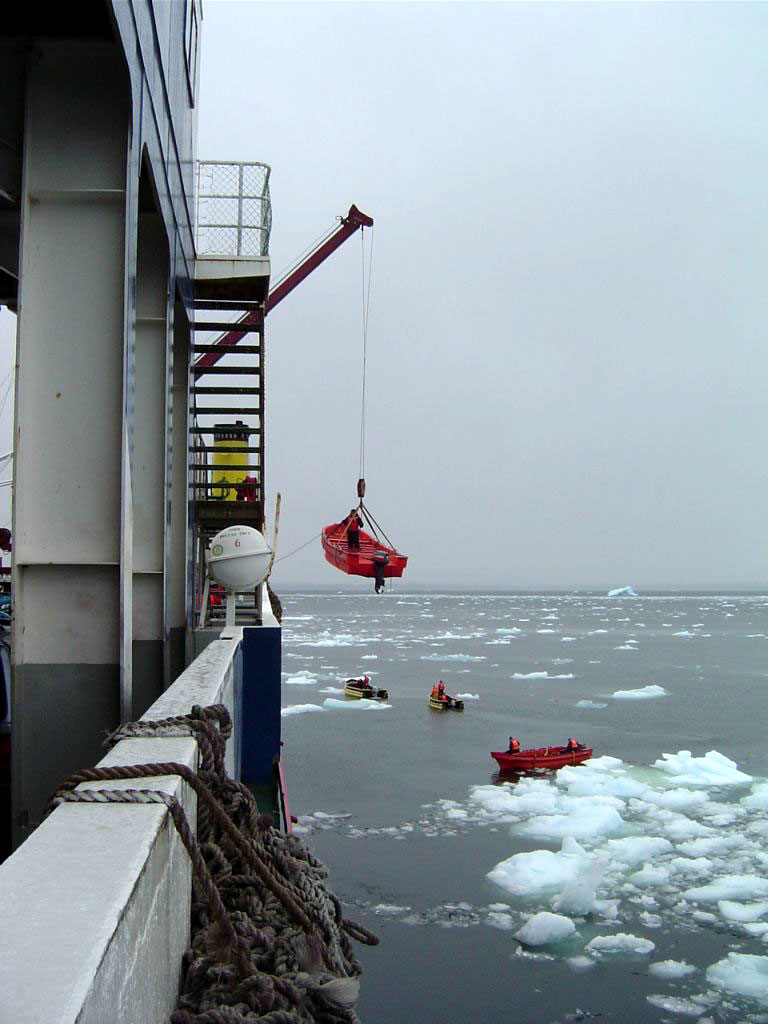
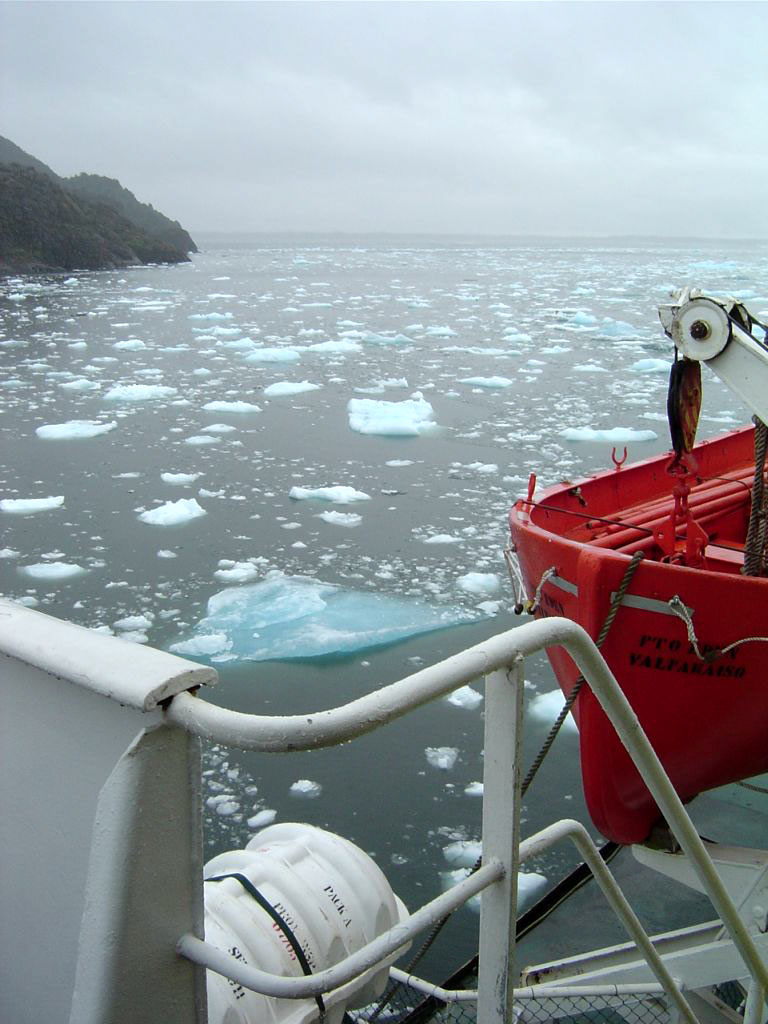
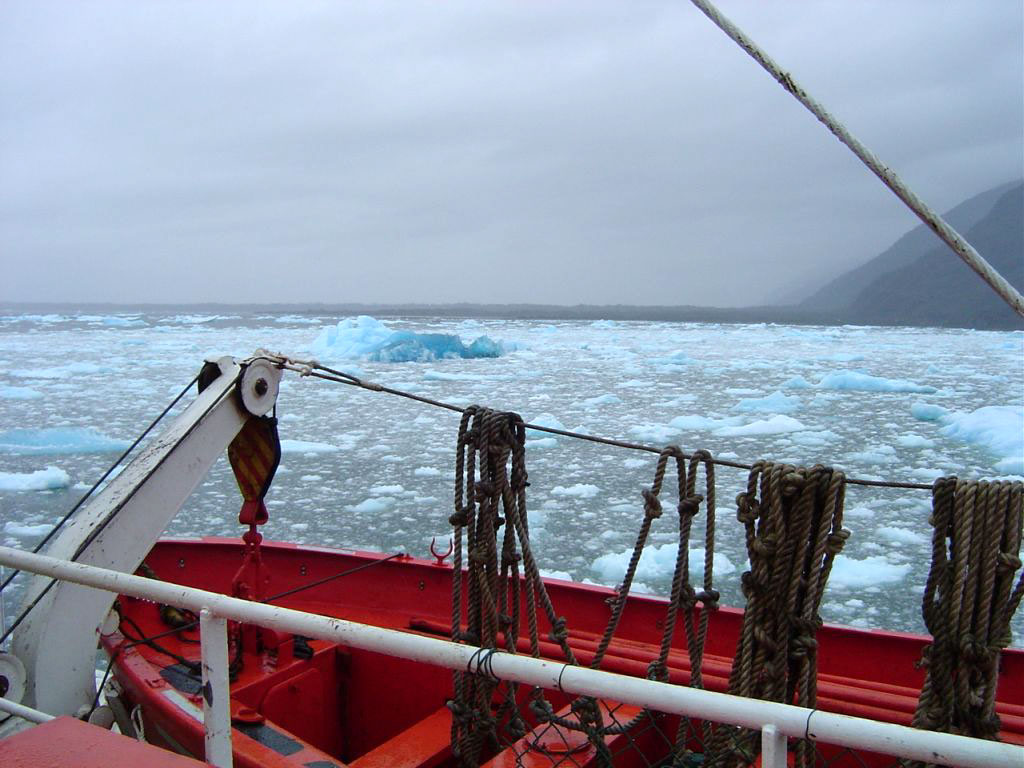
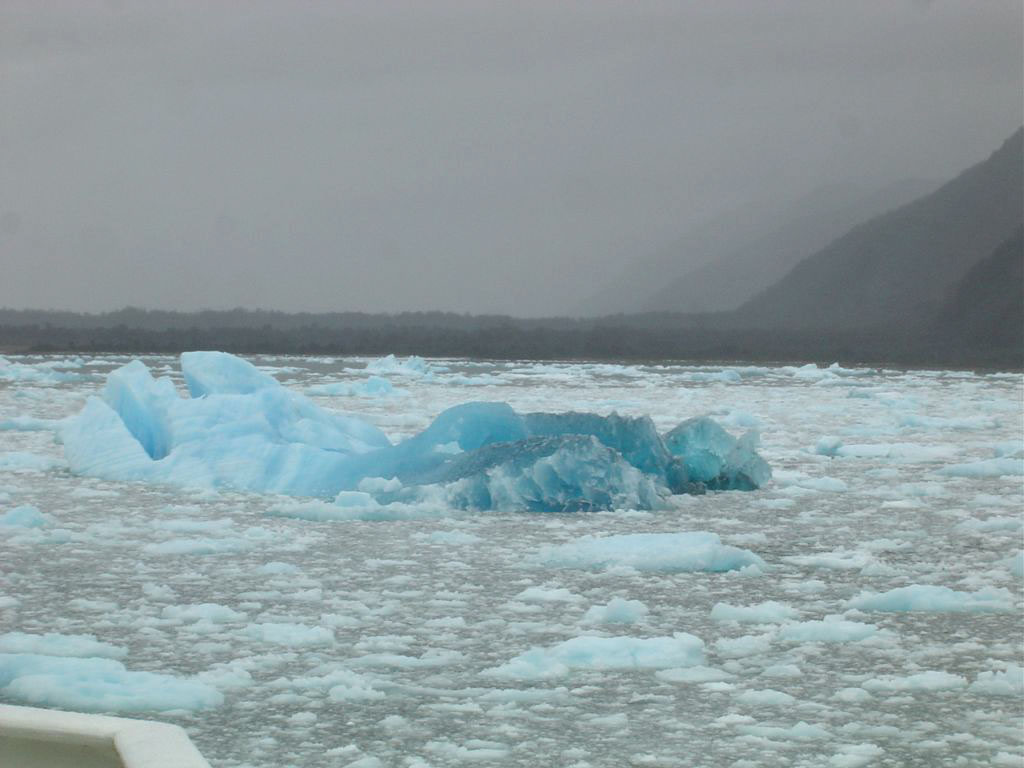
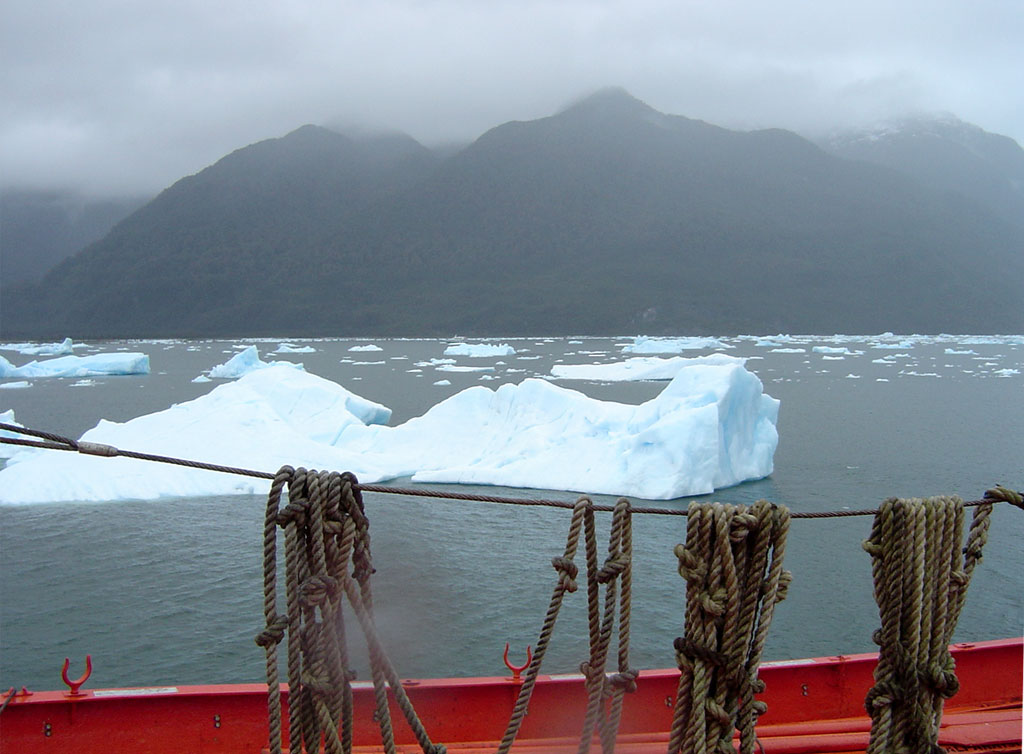
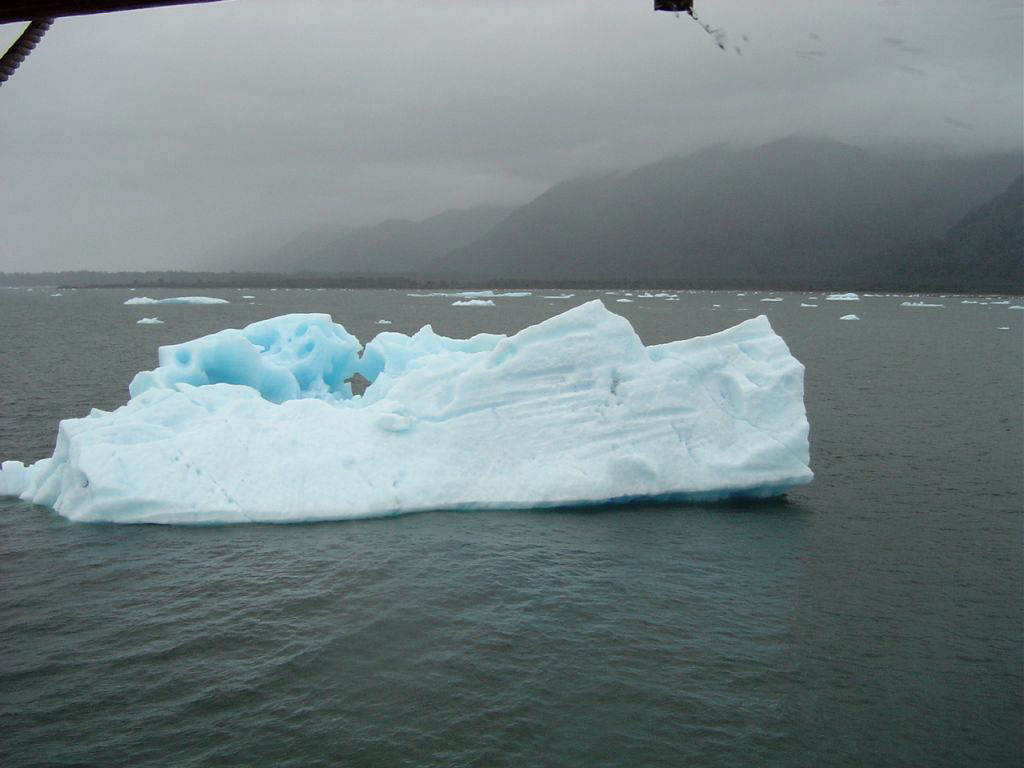
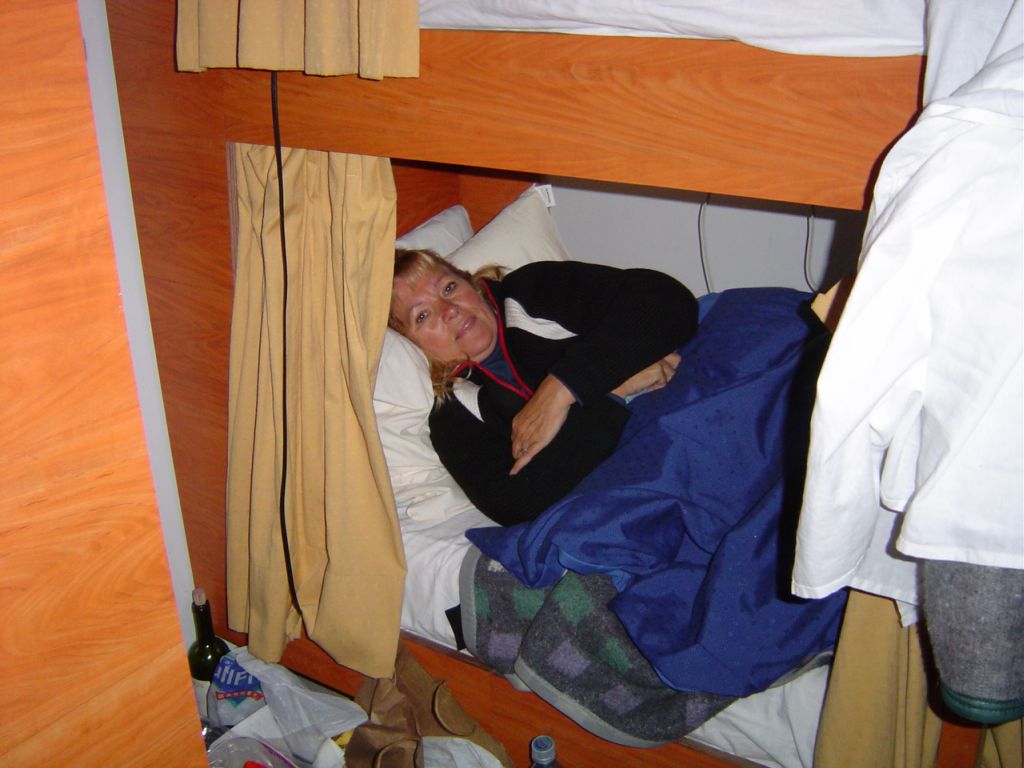
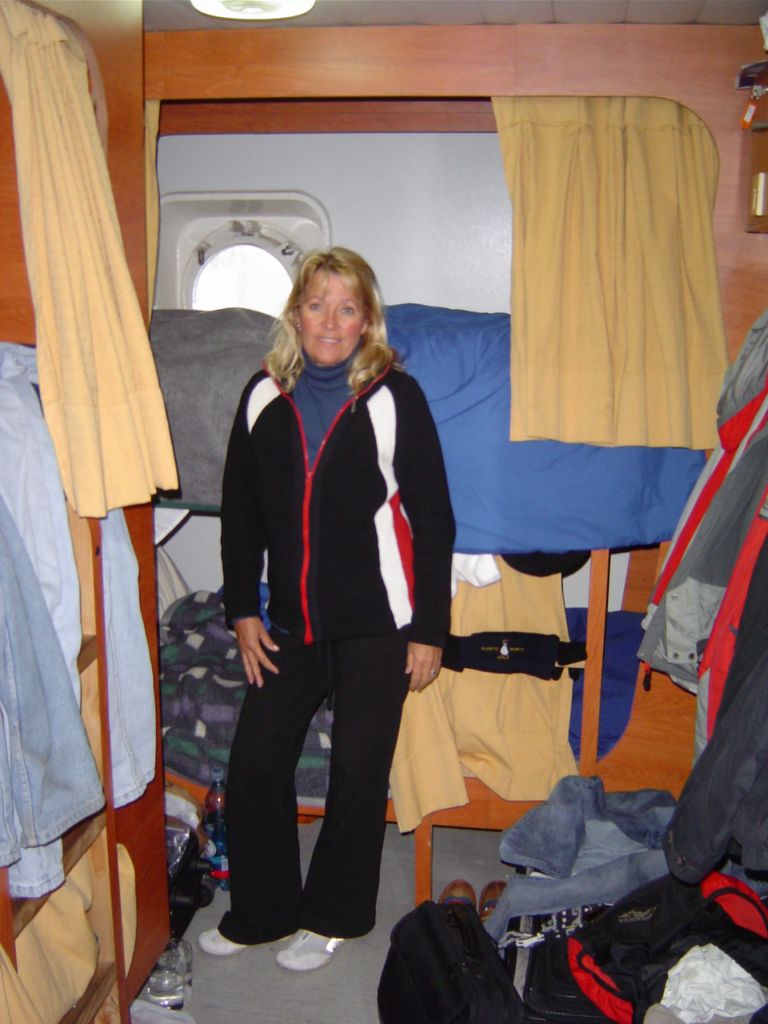
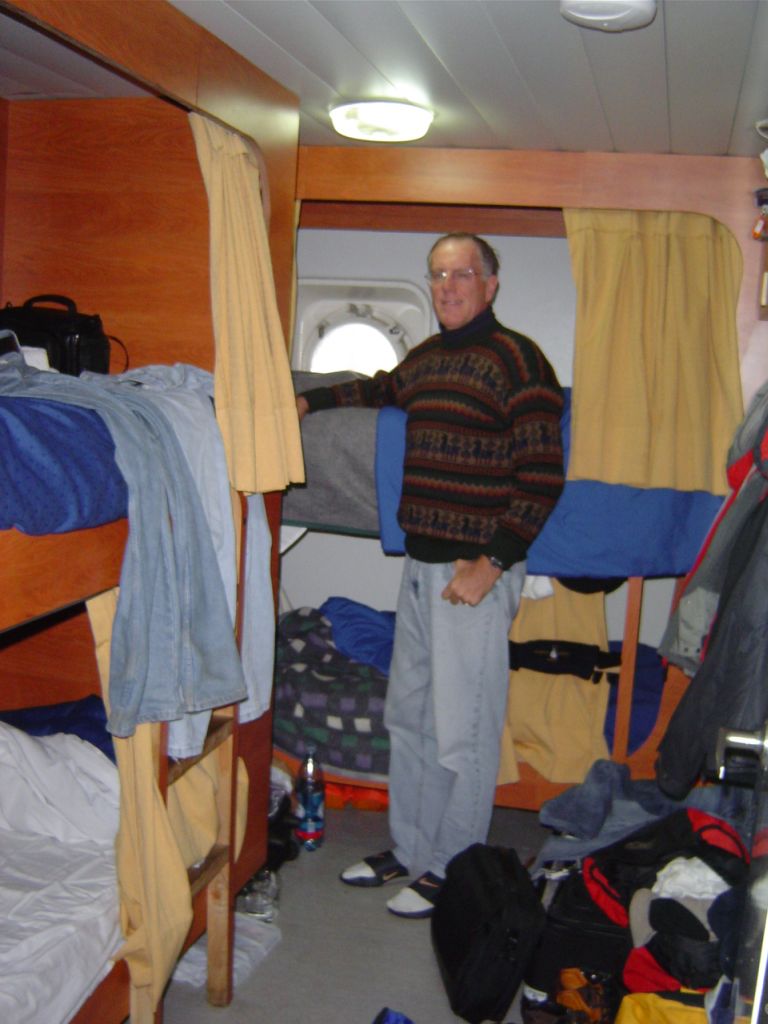
October 19th
Sixth Month on the Road
After six months, we have traveled 24,000 km (15,000 miles) and visited 13 countries. The location of Shangri La remains unknown...
The boat docked at 2:00 AM, with much banging and clanging. We got to go back to sleep until 7:00 AM, when we choked down our last helping of scrambled eggs over ham and cheese and raced for the exit. Our car was the only vehicle to leave the boat at 8:00 AM, as all of the other vehicles left before we departed for the glacier. We drove only 50 km to Coyhaique and checked into a hotel to recover from the boat ride.
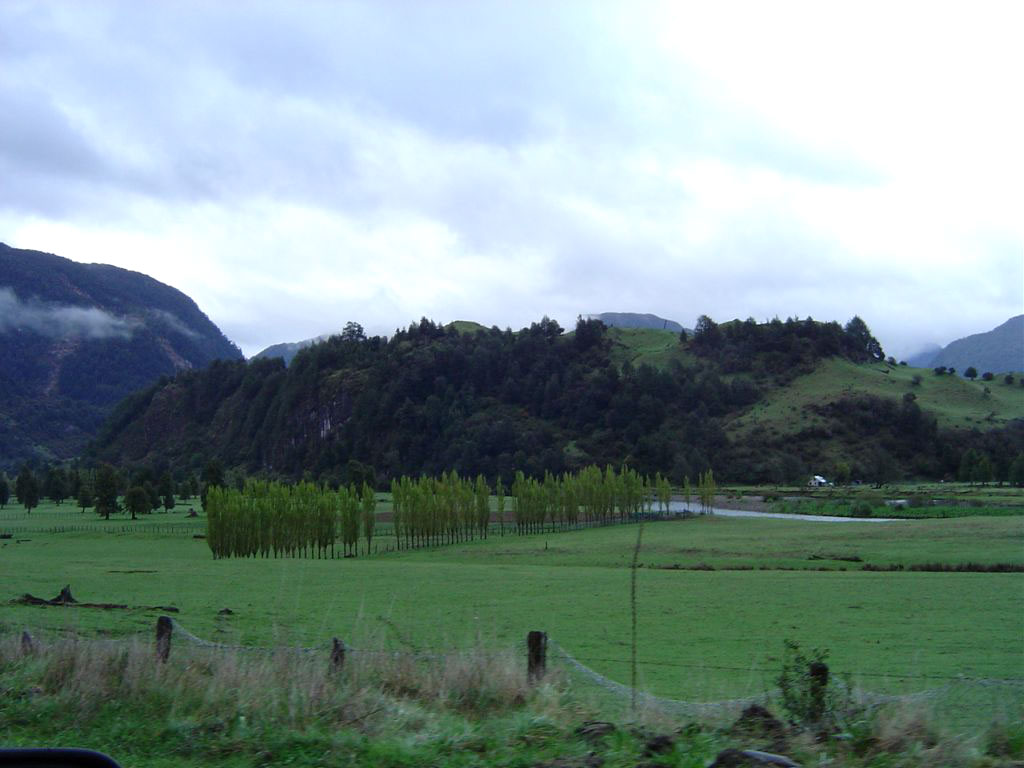
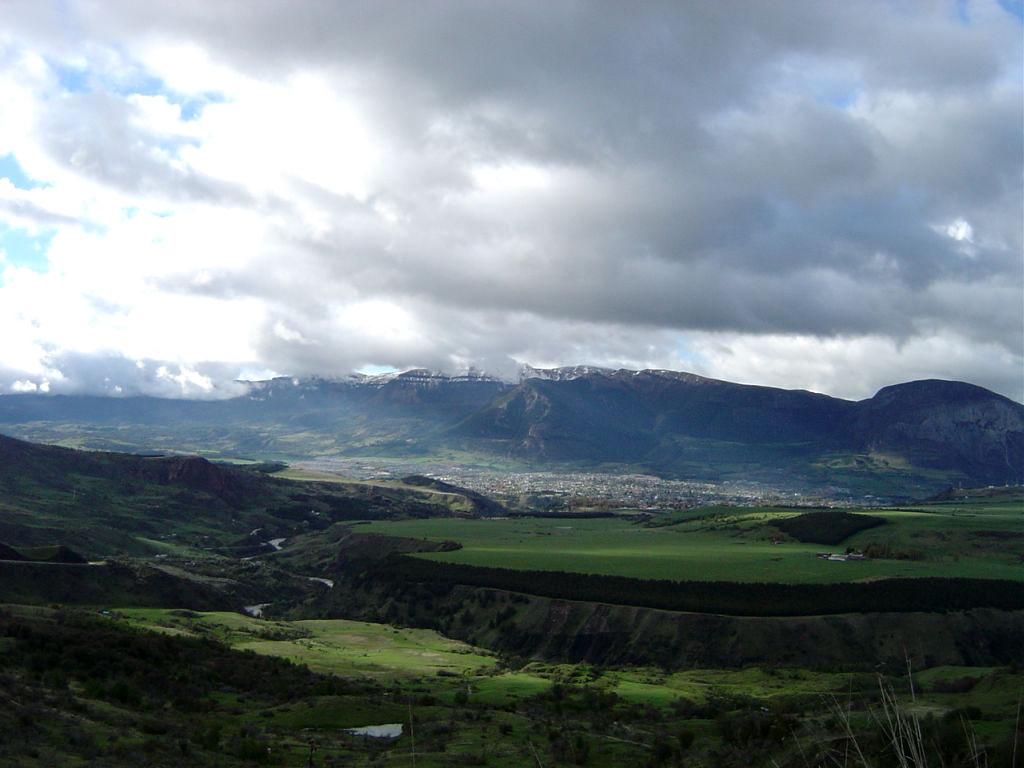
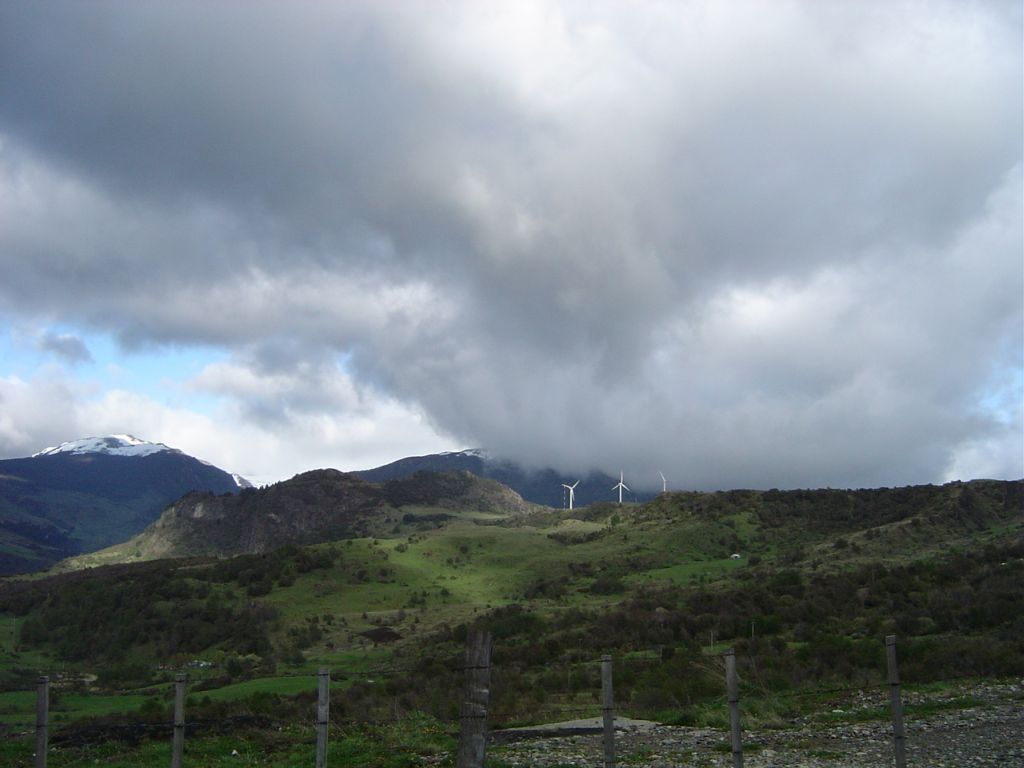
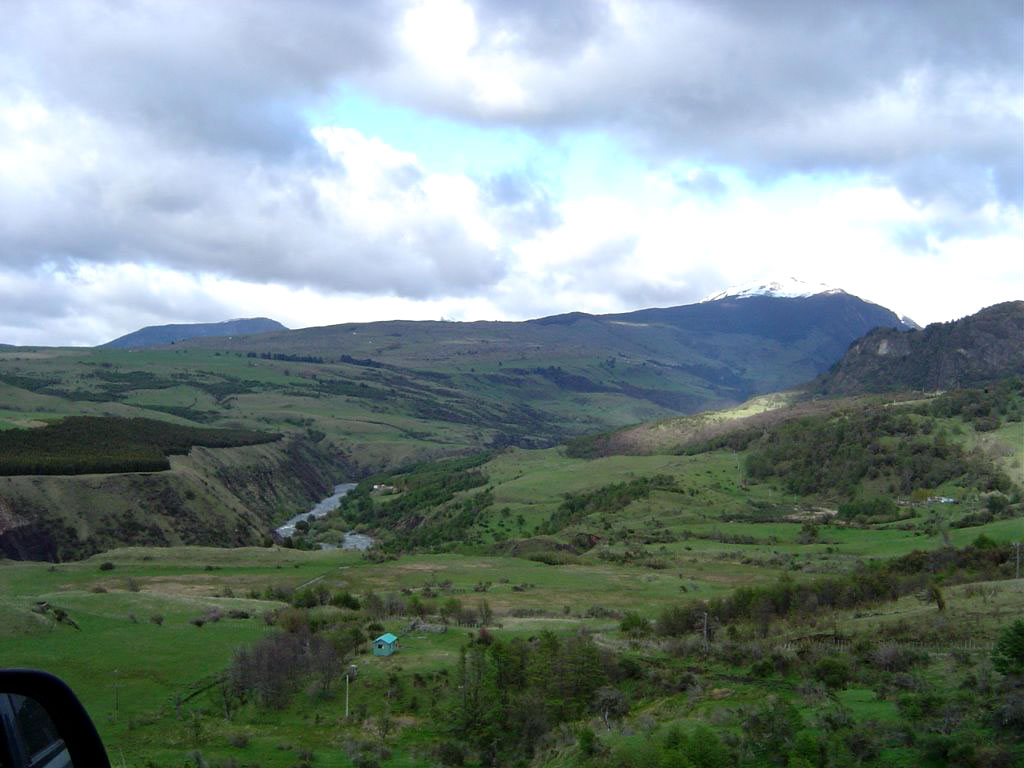
October 20th
The two-hour ferry from Puerto Ibanez to Chile Chico was almost fully booked, but they found enough room to squeeze us in. My space was so small I couldn't open either car door to get out; I had to crawl over the luggage and out the rear hatch. There were white-caps on the lake, (South America's second largest) but the wind, probably 20+ knots, was at our back and the ride was smooth.
After a quick lunch in Chile Chico, we crossed the border into Argentina, only to find that we hadn't properly checked out of Chile. It was necessary to back-track 10 km on a gravel road to get our exit papers stamped.
We passed Hotel Antigua Patagonia in Los Antiguos twice before stopping to ask where it might be. It was only 100 feet away, but there was no sign.
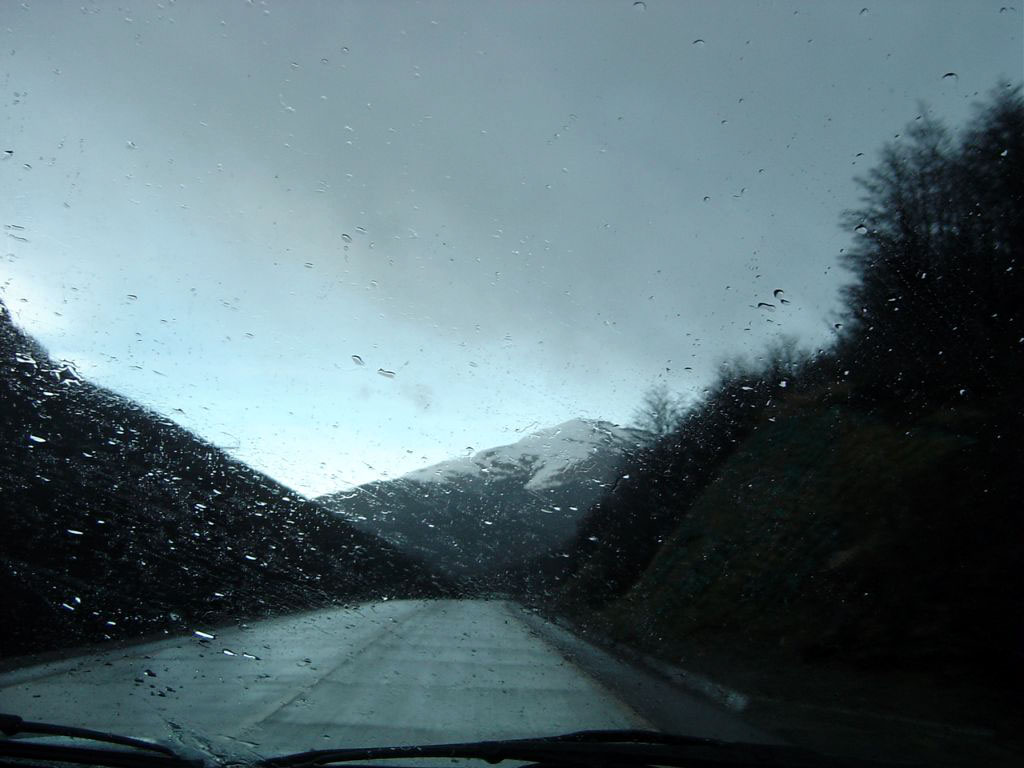
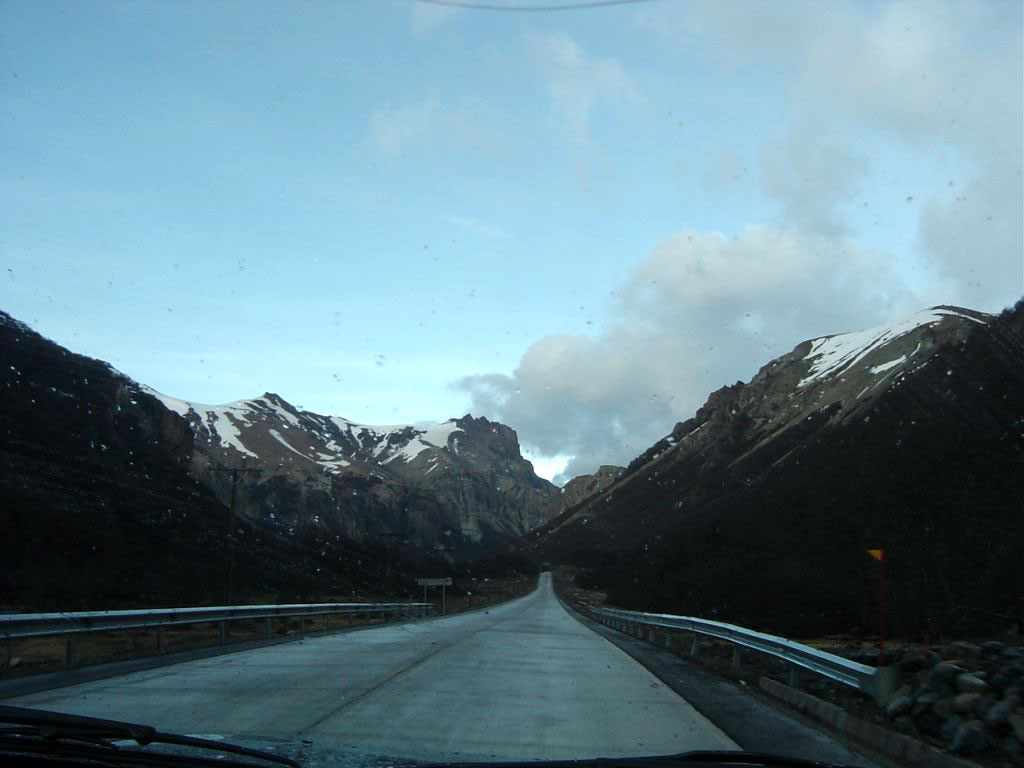
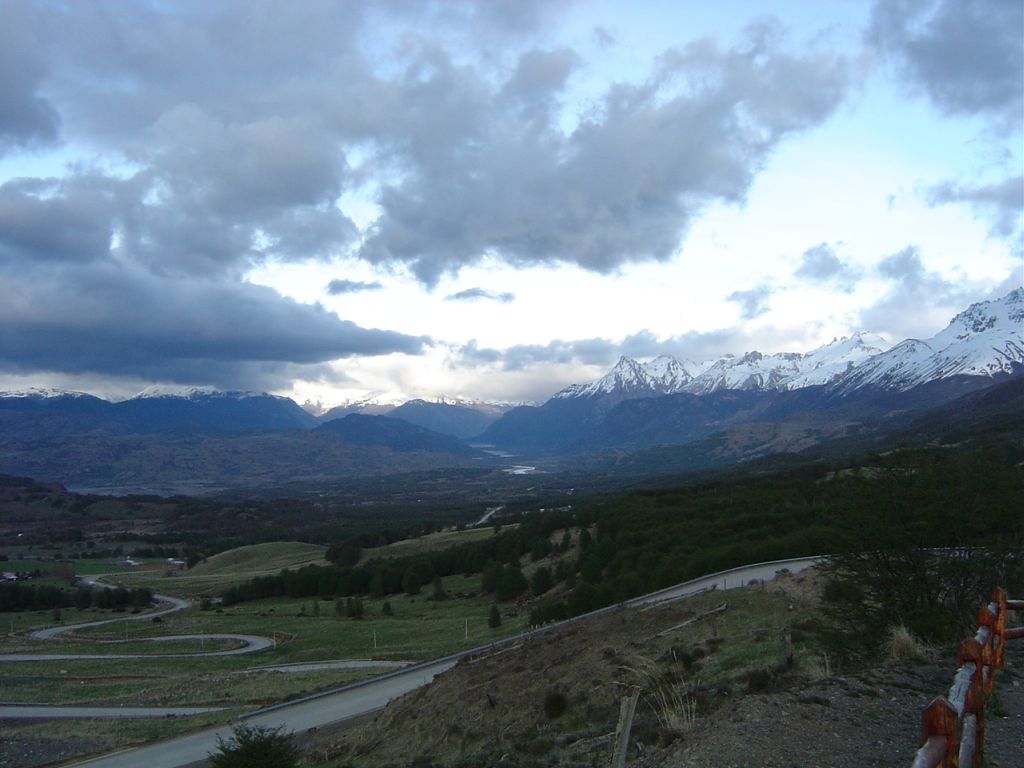
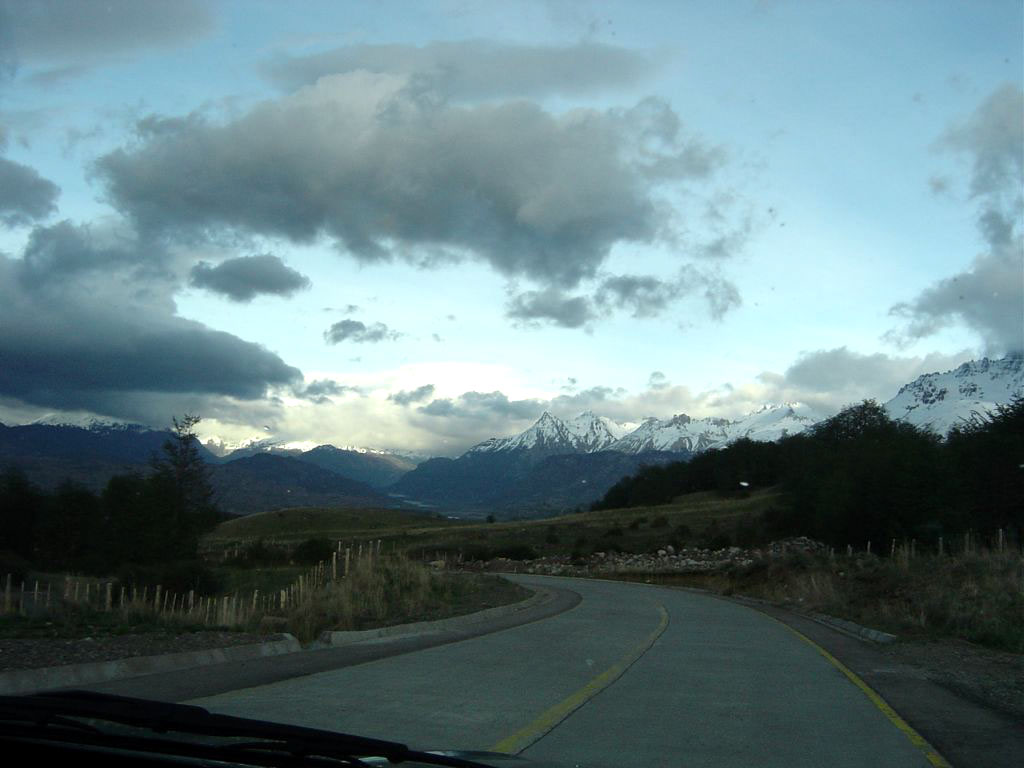
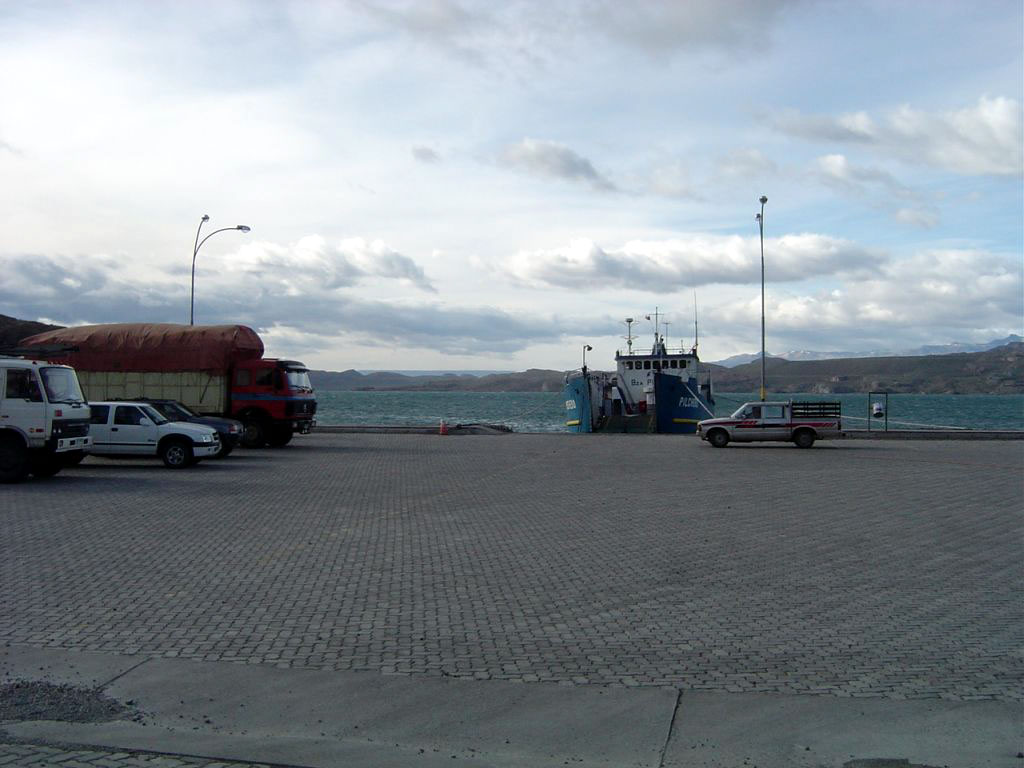
Everybody waiting for the ferry had resevations, except the gringos from California
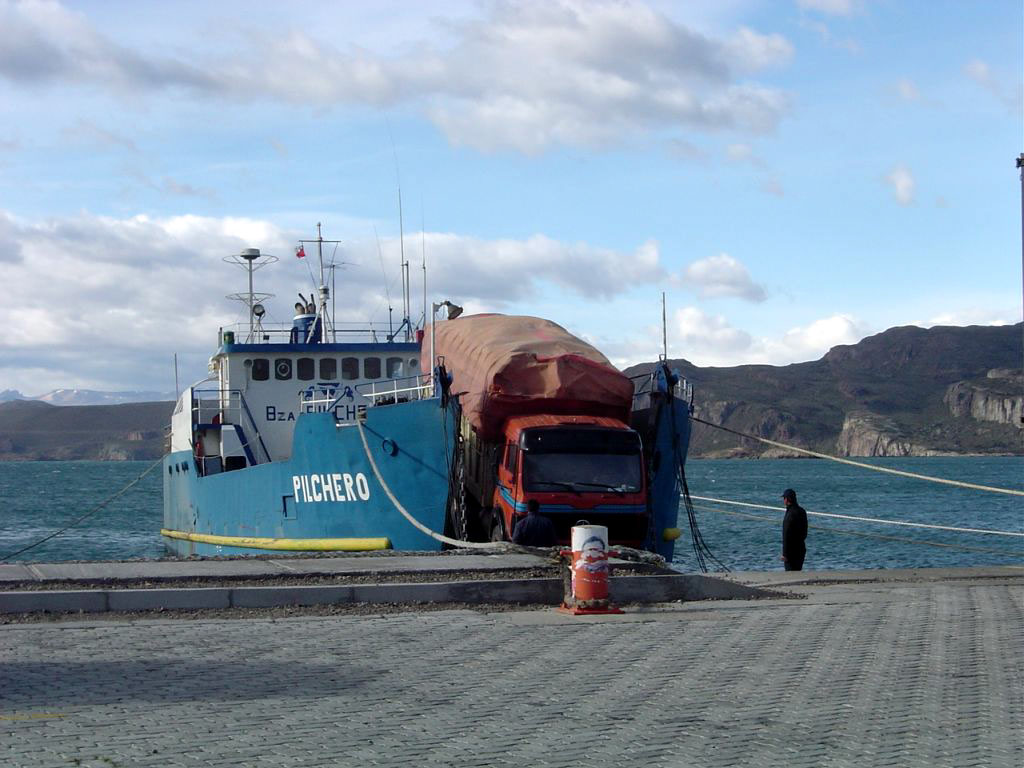
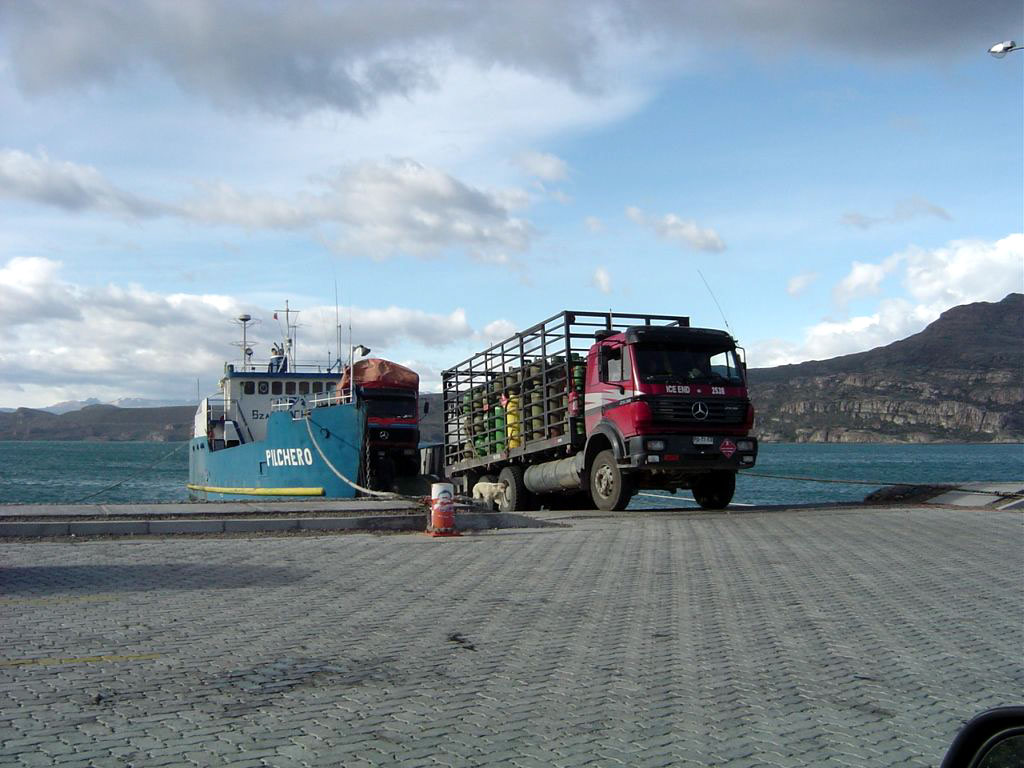
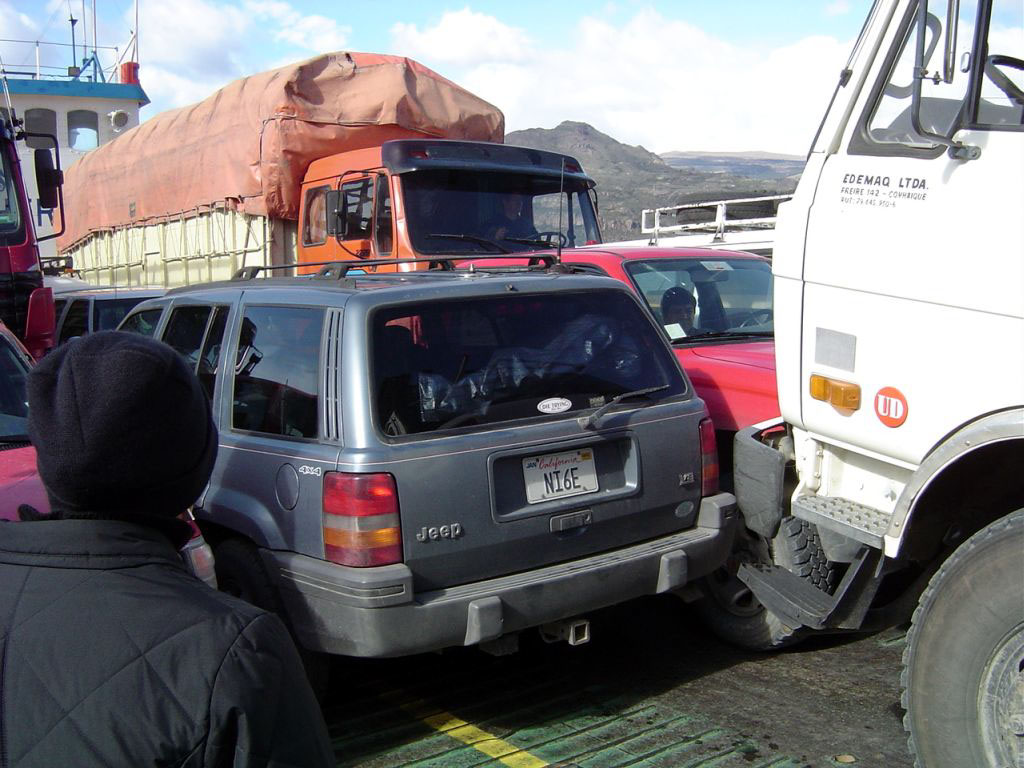
It was either wait in the car for two hours or crawl out the rear hatch
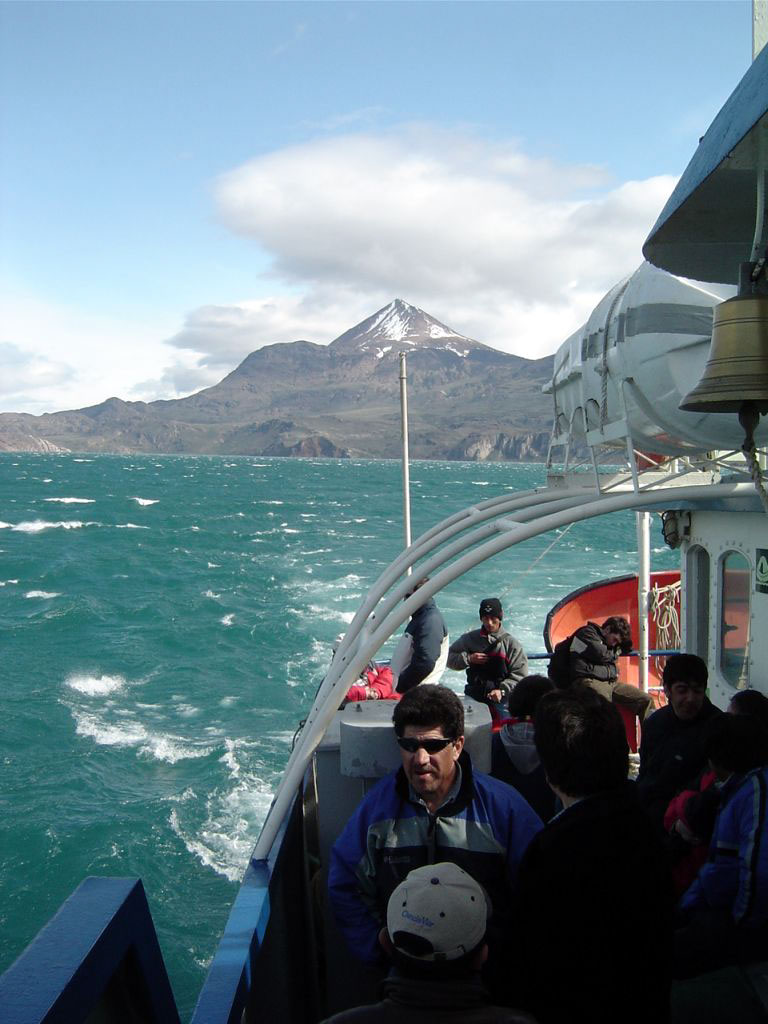
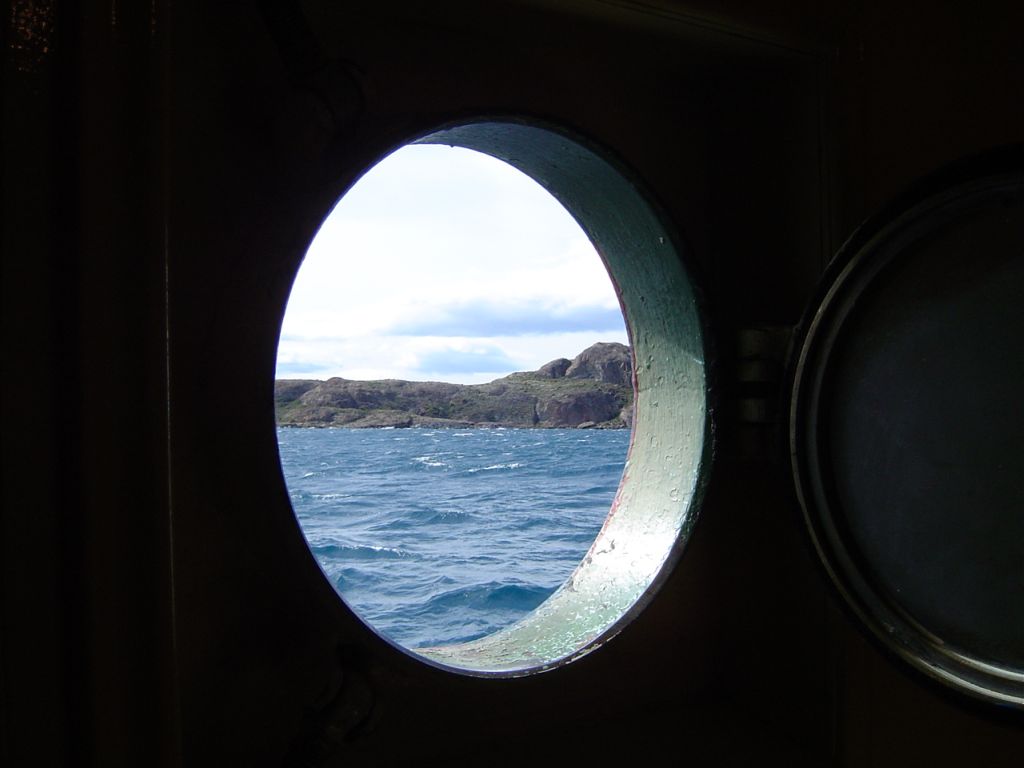
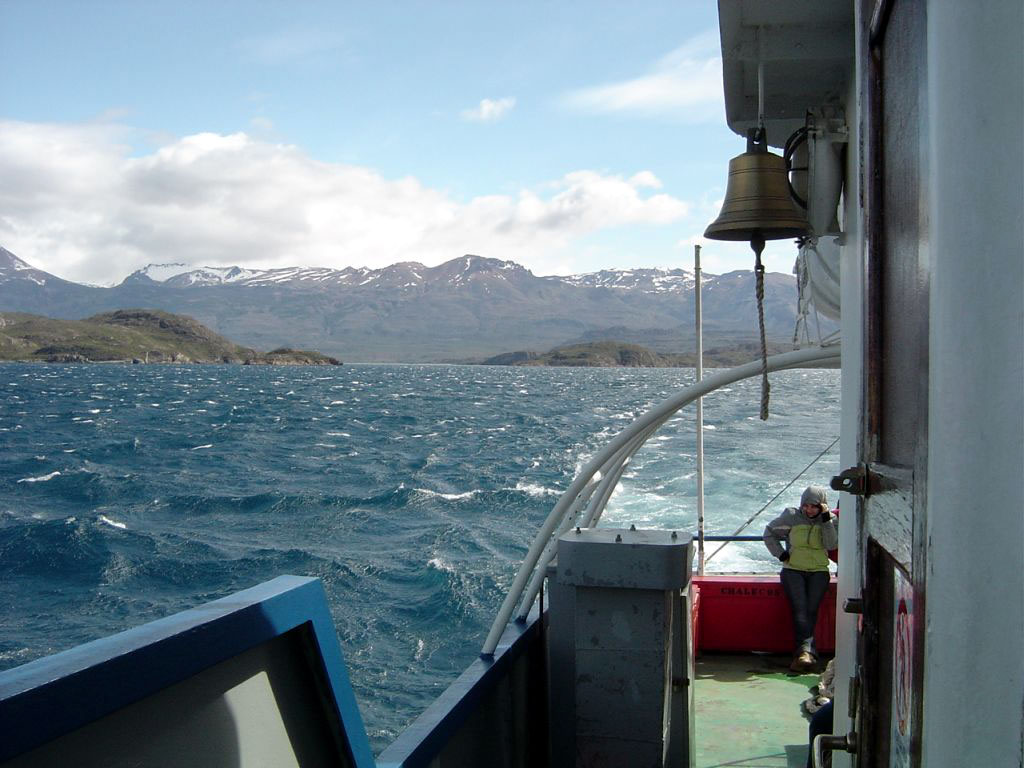
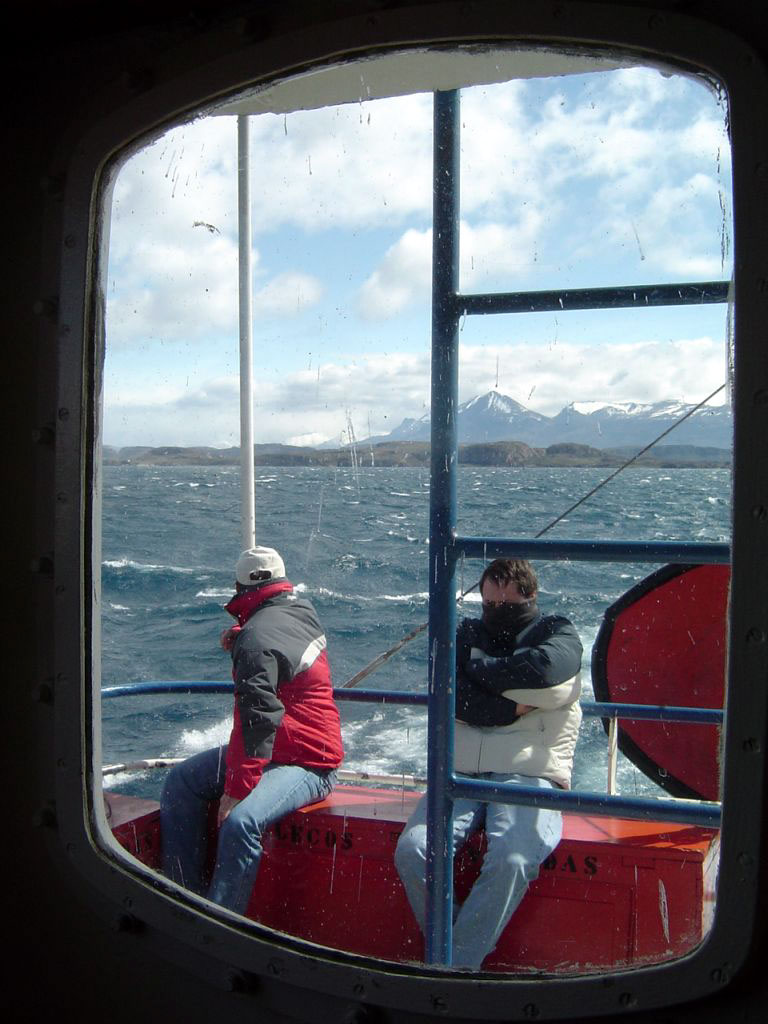
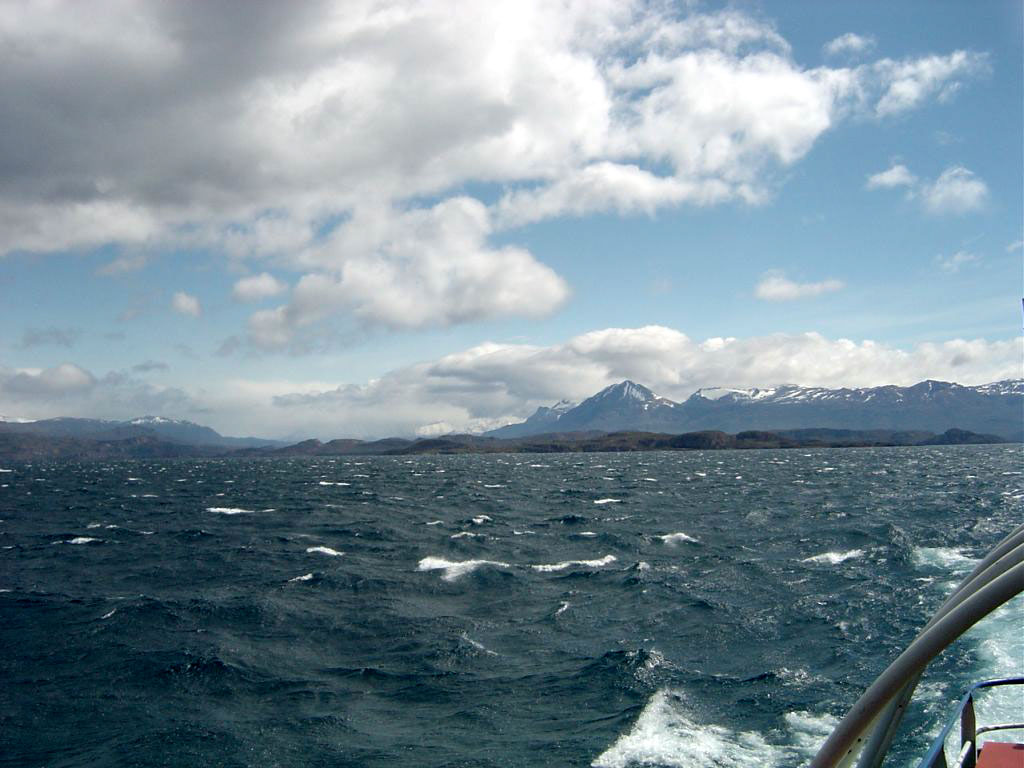
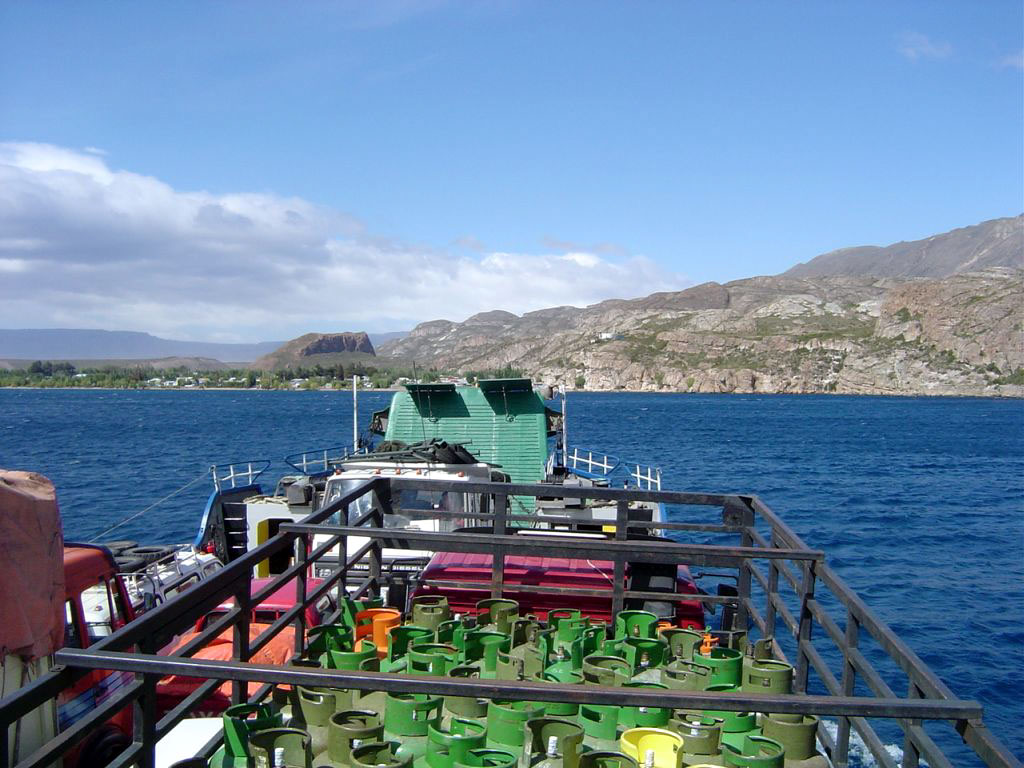
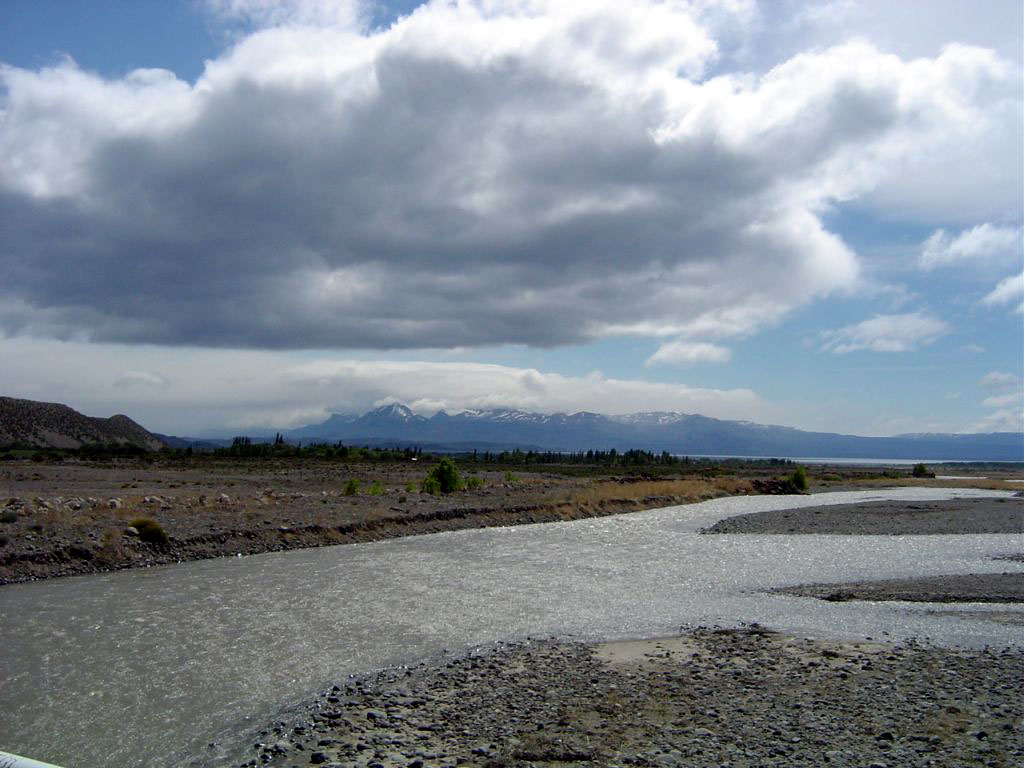
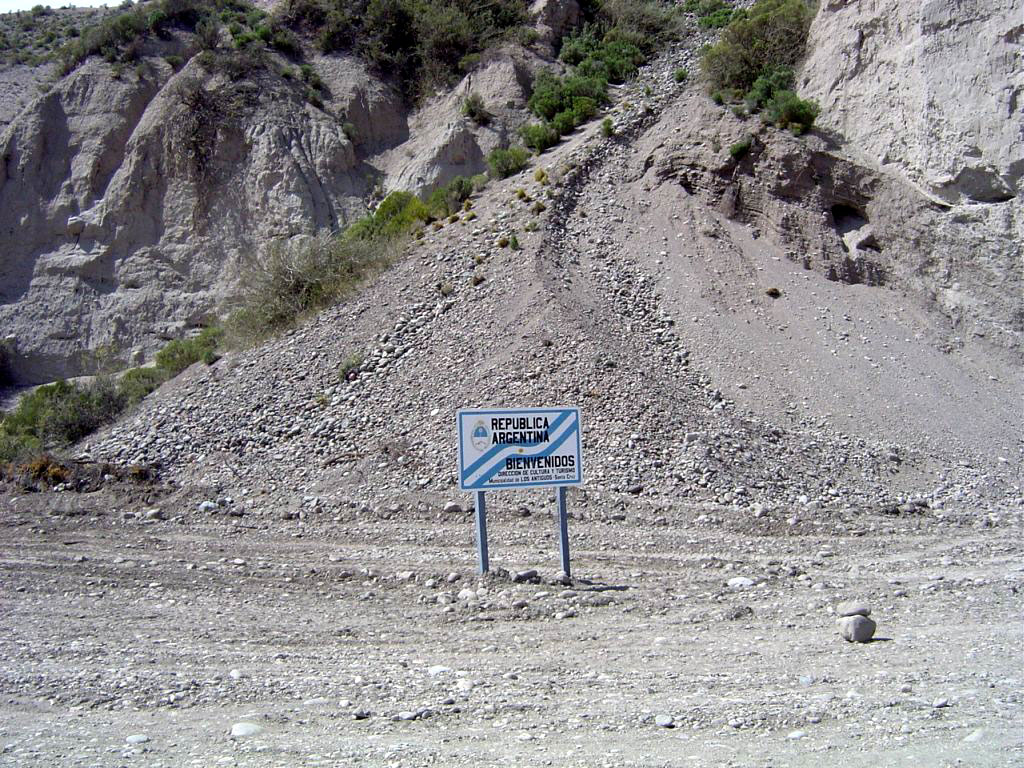
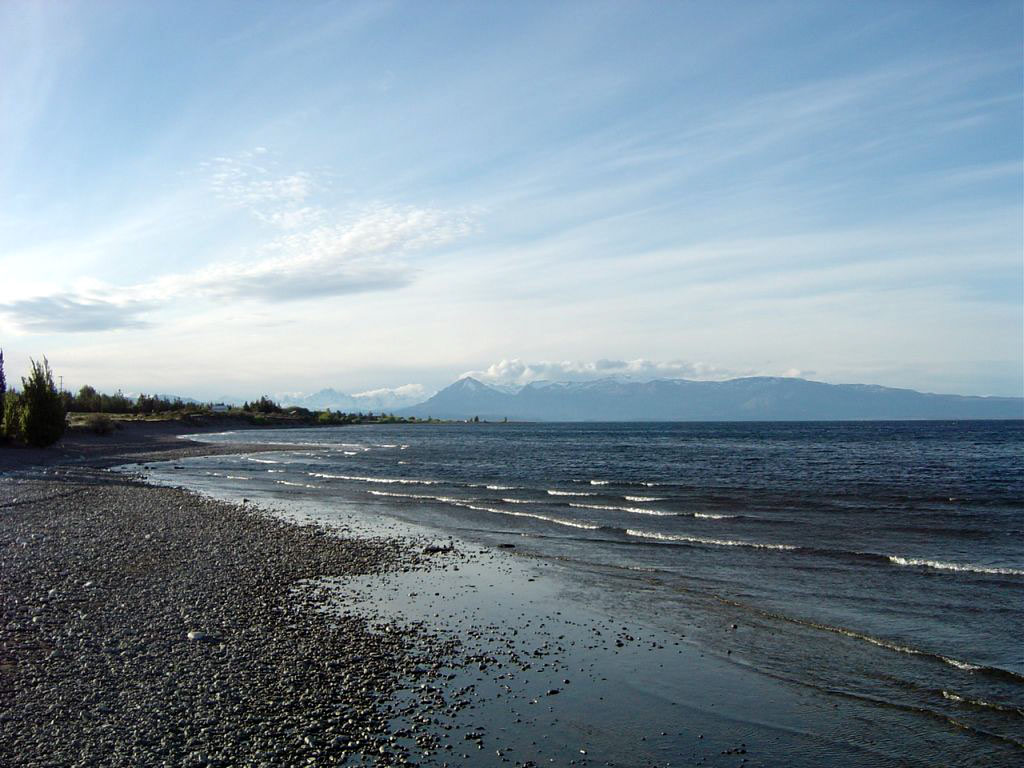
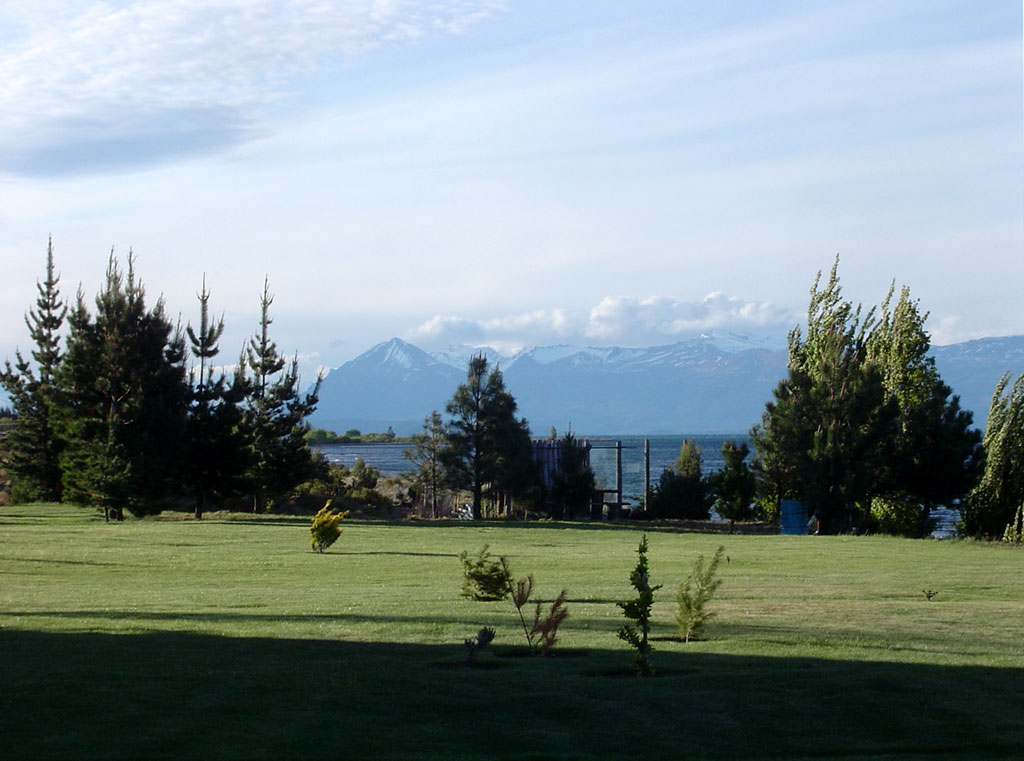
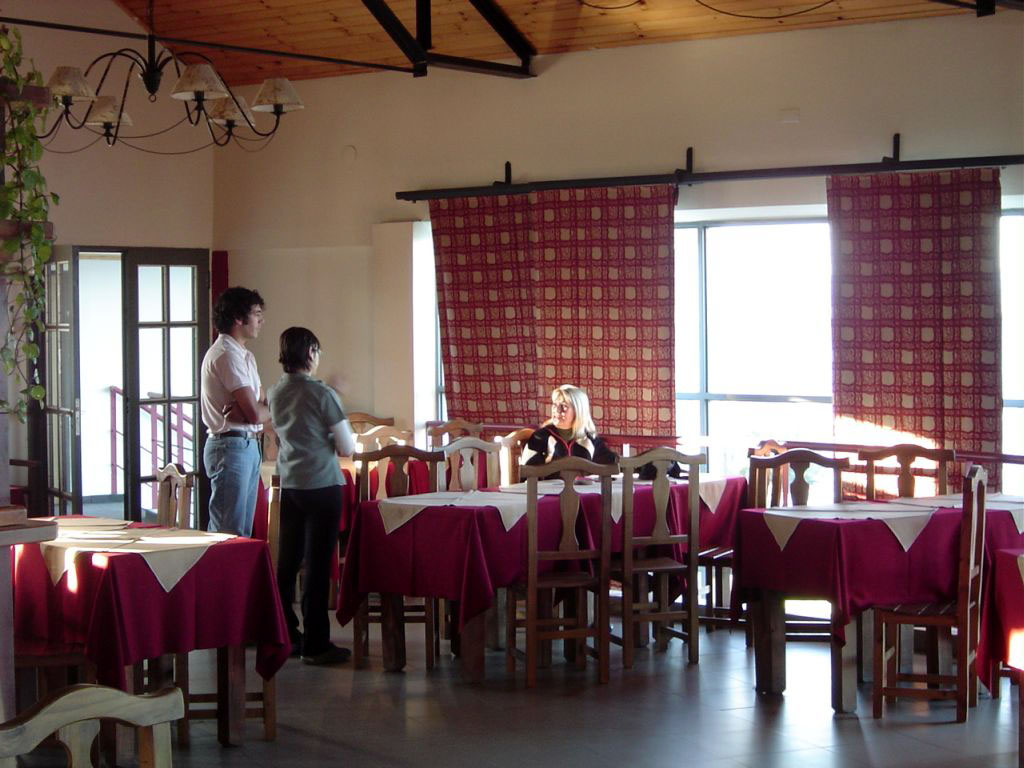
Ordering Dinner at Hotel Antigua Patagonia in Los Antiguos
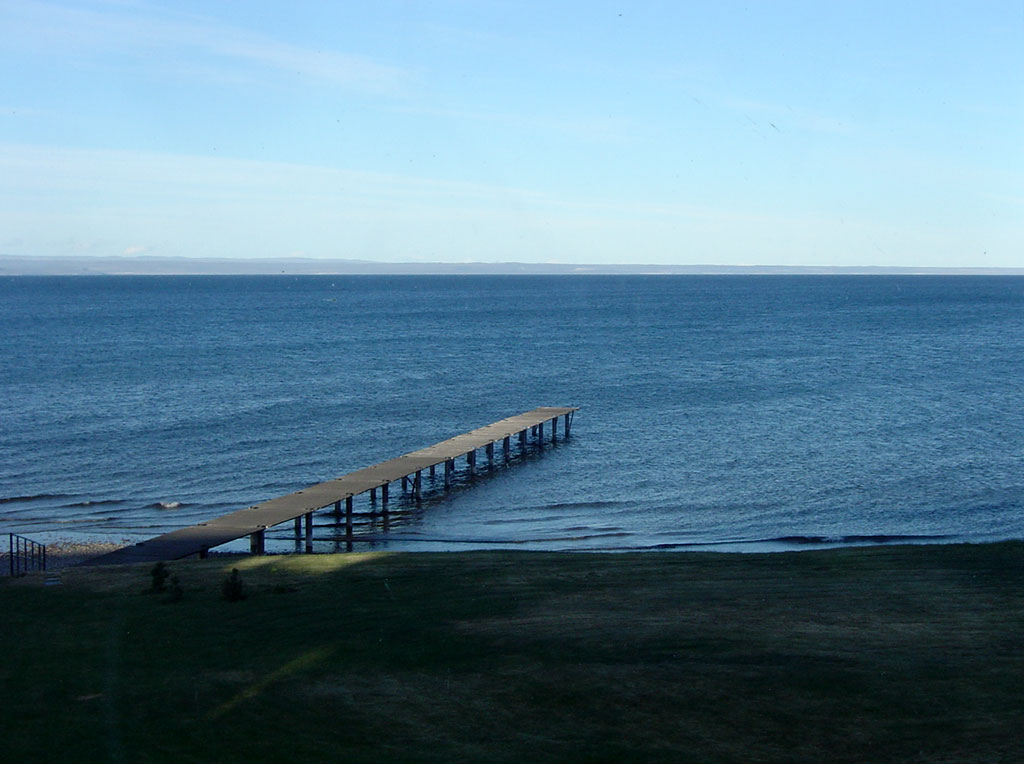
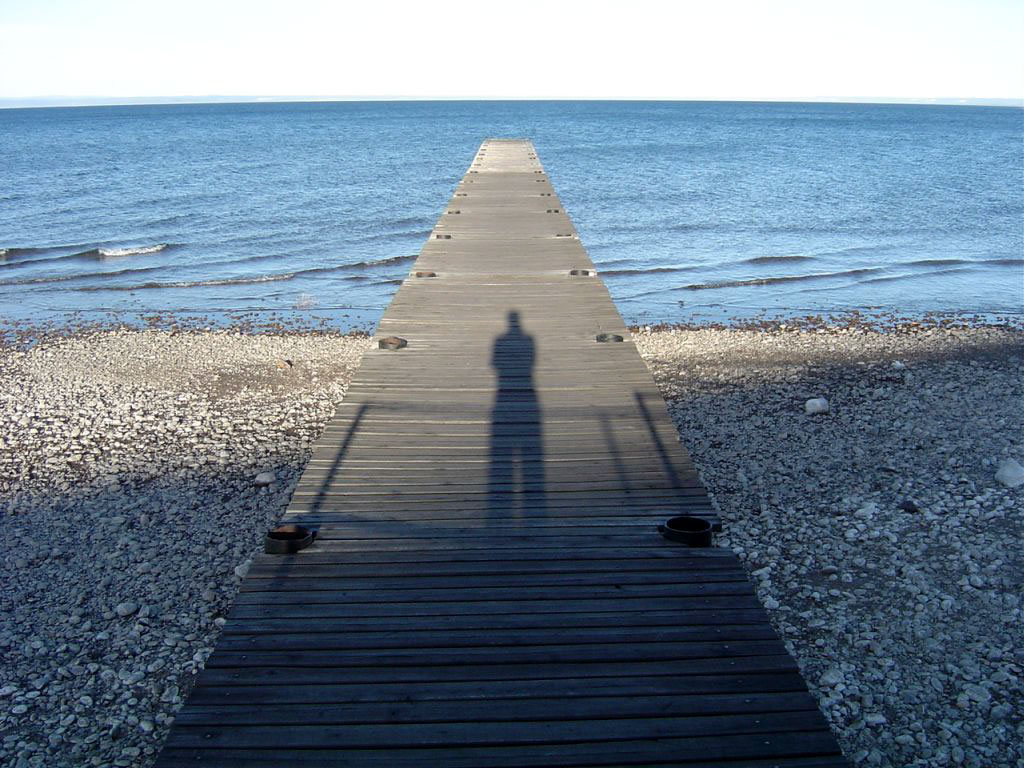
October 21st
We stopped at a gas station in Perito Moreno to check on the status of RN40, the road south toward El Calafate. The attendant noted that the "ripio" (gravel) road needed maintenance and suggested the paved route via Coleta Olivia on the Atlantic coast. So off to the east we headed, in order to go south.
Hundreds of walking-beam oil pumps appeared near Las Heras, in what must be a major oil-field. They disappeared a few hours later.
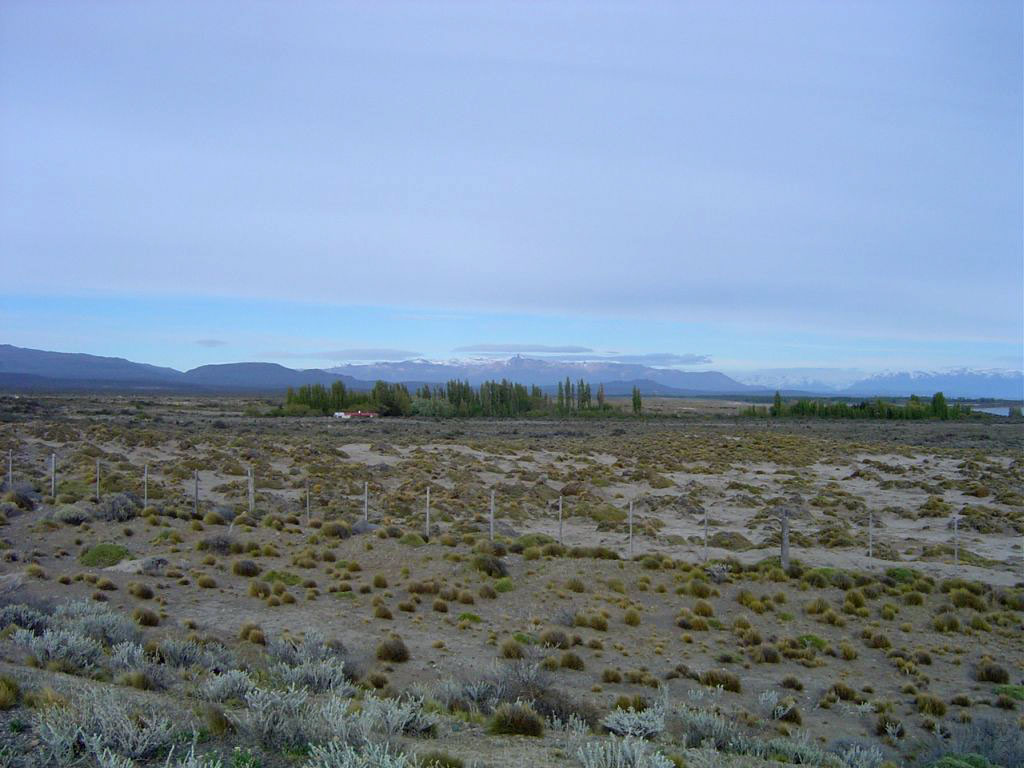
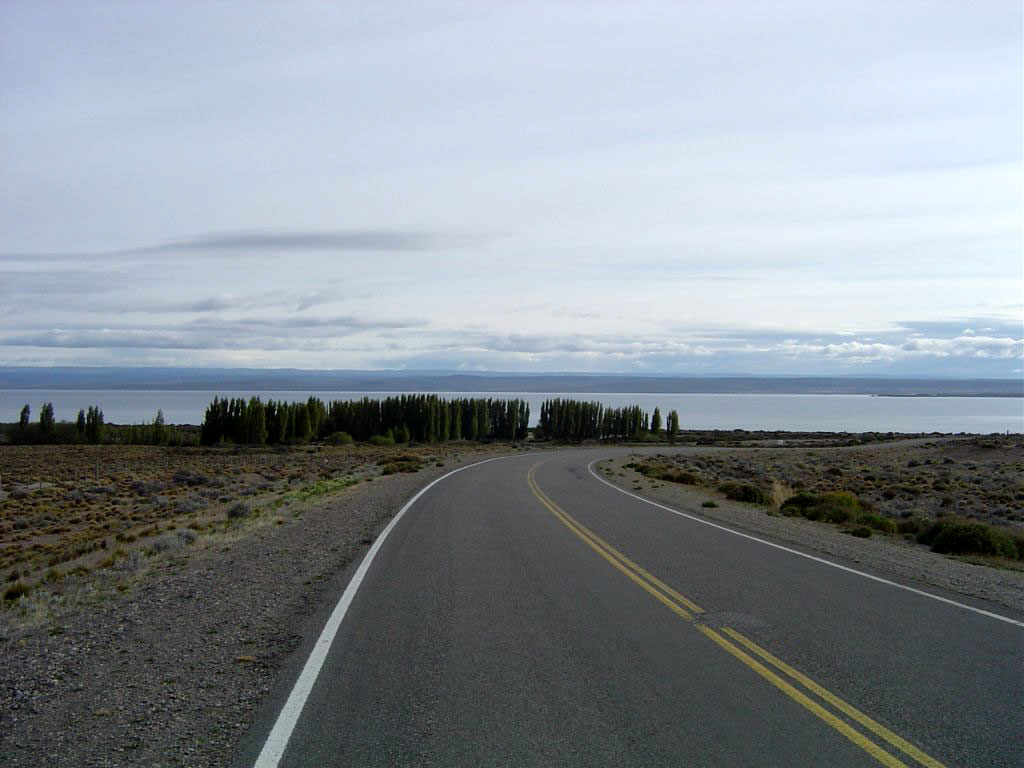
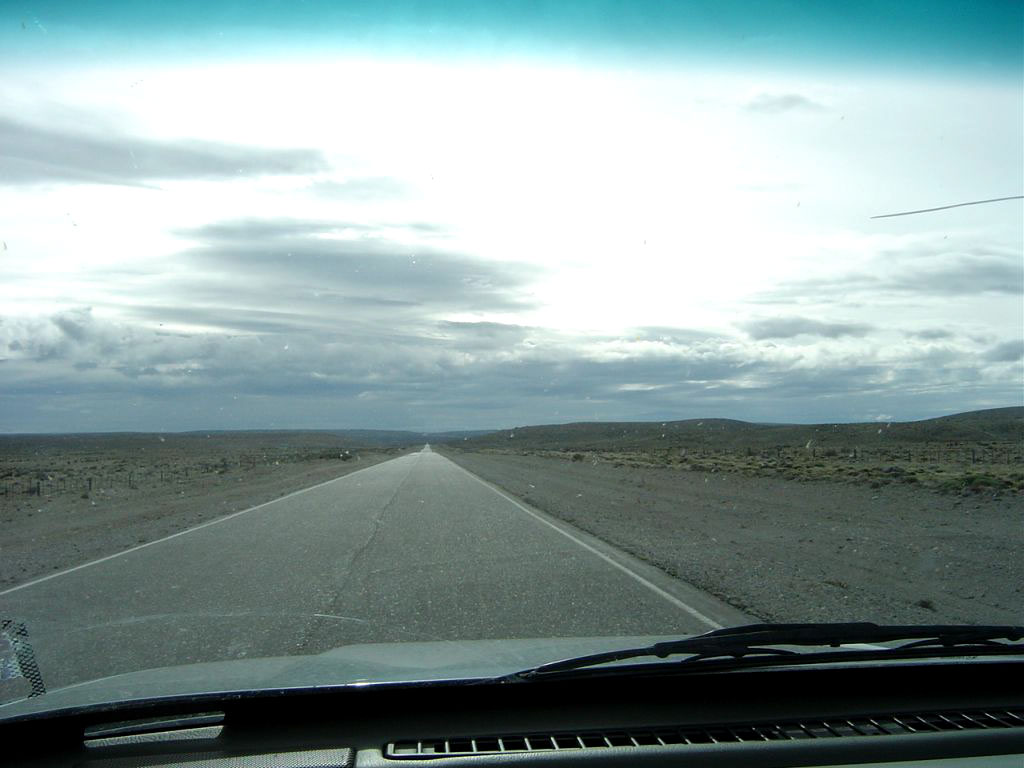
October 22nd
The road south from Coleta Olivia to Piedra Buena runs through dry, flat, basically featureless country. A group of guanacos, meandering on the road, made a surprise appearance. Having seen llamas, alpacas and vicunas, this was the last member of the family, one we expected to miss.
Flamingos, last seen high in the Andes of Peru, were wading in a lake near the road, here near sea-level.
The road, straight as an arrow in spots and good for 70 mph most of the way, was almost empty.
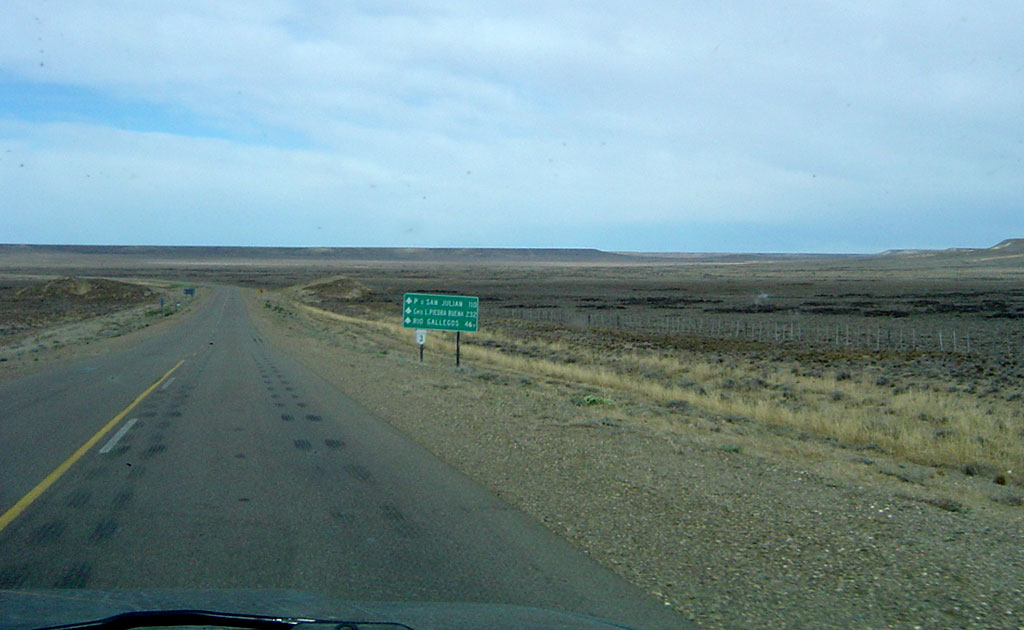
Puerto San Julian 110 km
Piedra Buena 217 km
Rio Gallegos 460 km
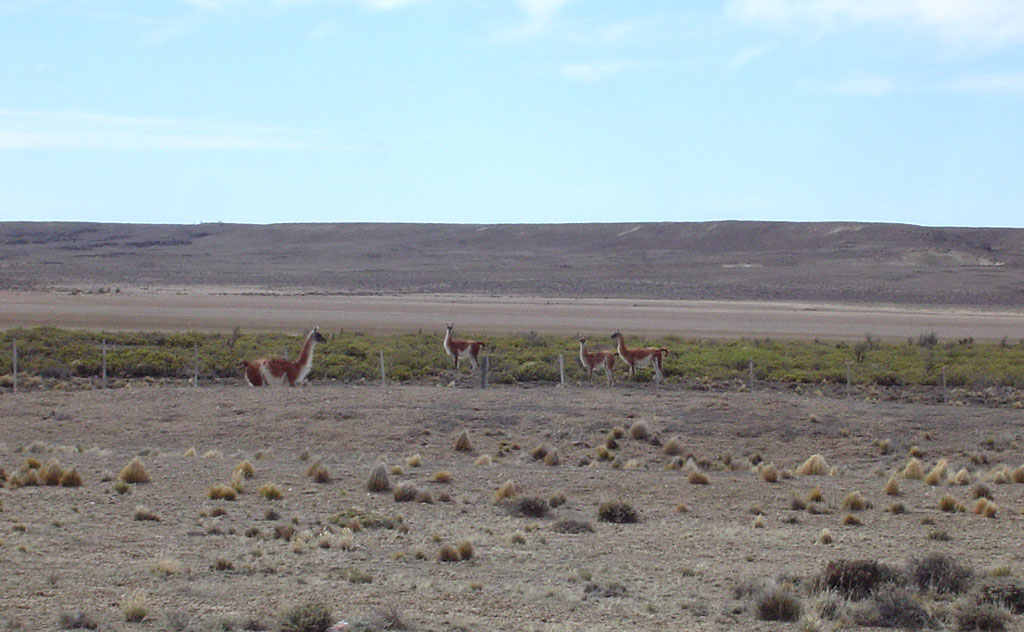
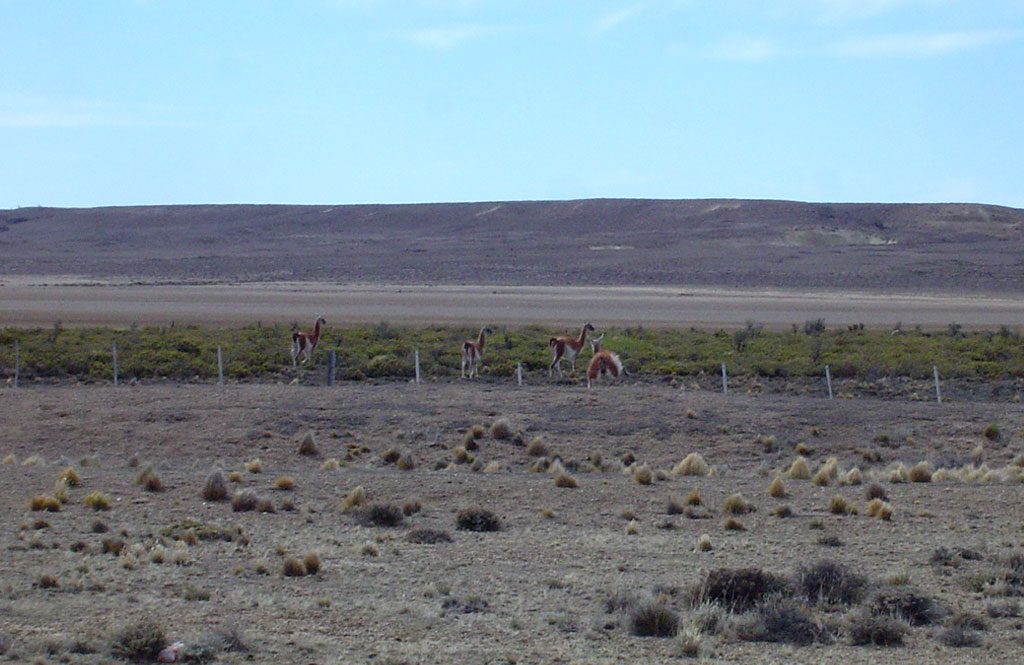
October 23rd
Rio Gallegos, an easy 225 km down the road, became our next stop. At a steady 70 MPH, a strong head-wind cut our gas mileage to 15 miles per gallon; on sections of the road with the wind behind us, it went up to 21 MPG.
Elsa, good at spotting German license plates, saw one on a Toyota Land-Cruiser in Rio Gallegos. Albert and Lydia, from Munich, had shipped it from Germany to Buenos Aires a month before and are planning a six-month loop through Argentina, Chile, Bolivia and Uruguay.
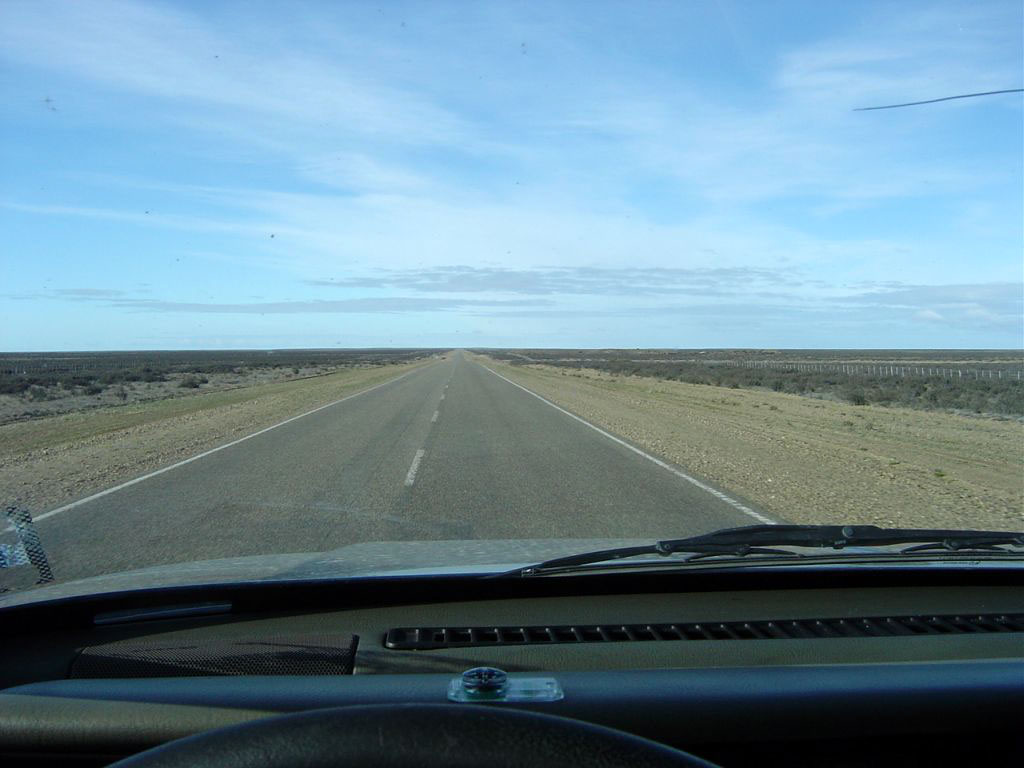
This picture sums up the entire day